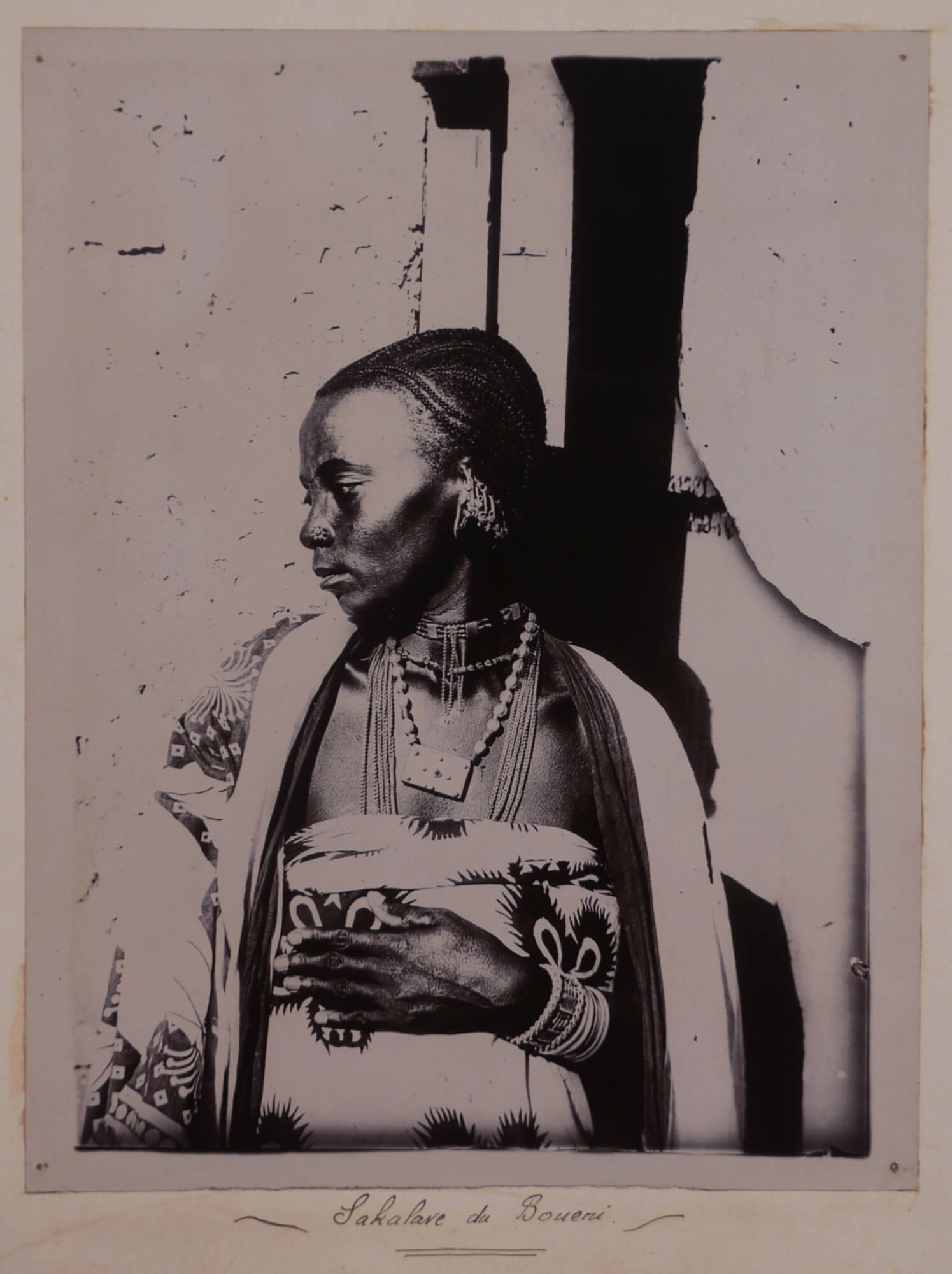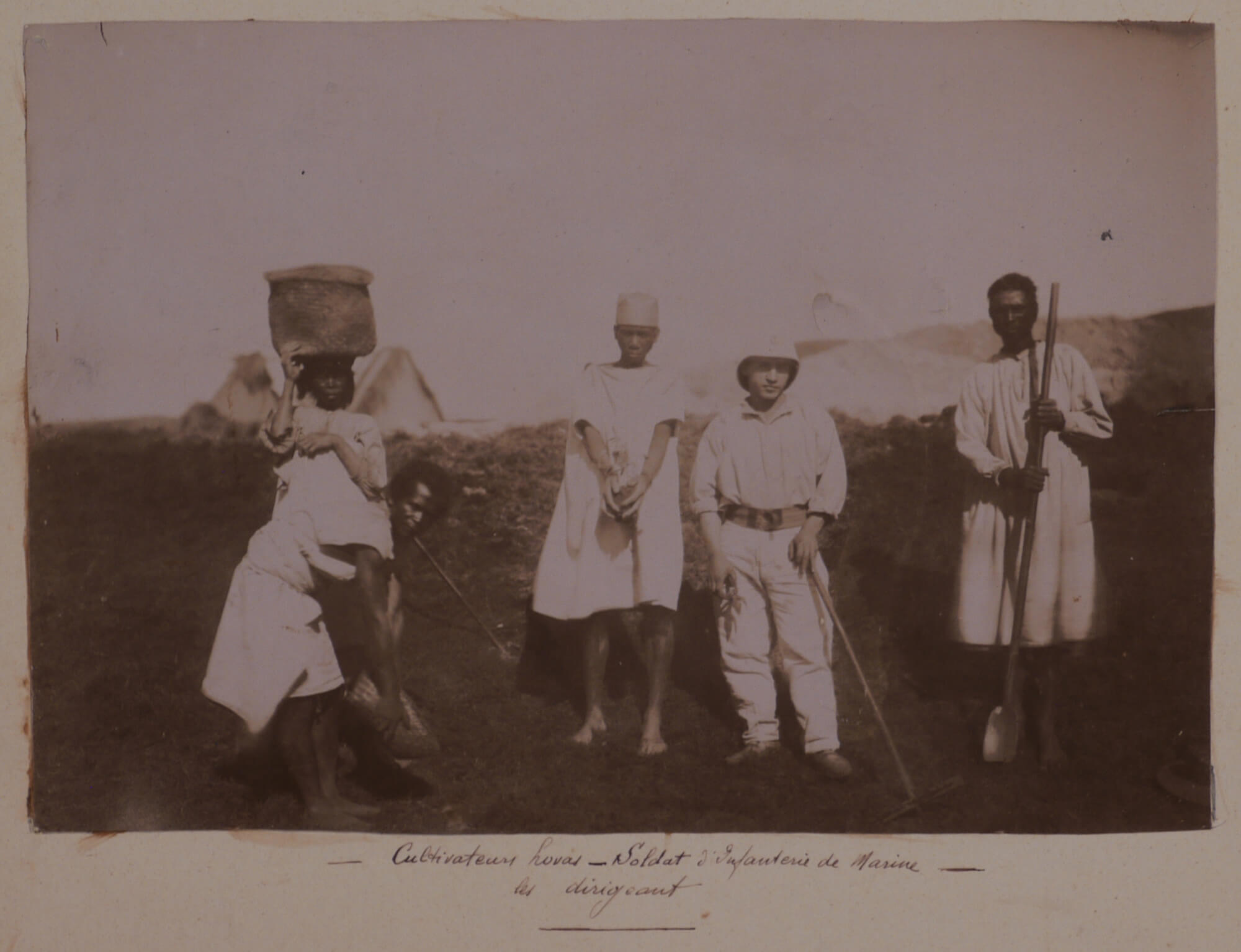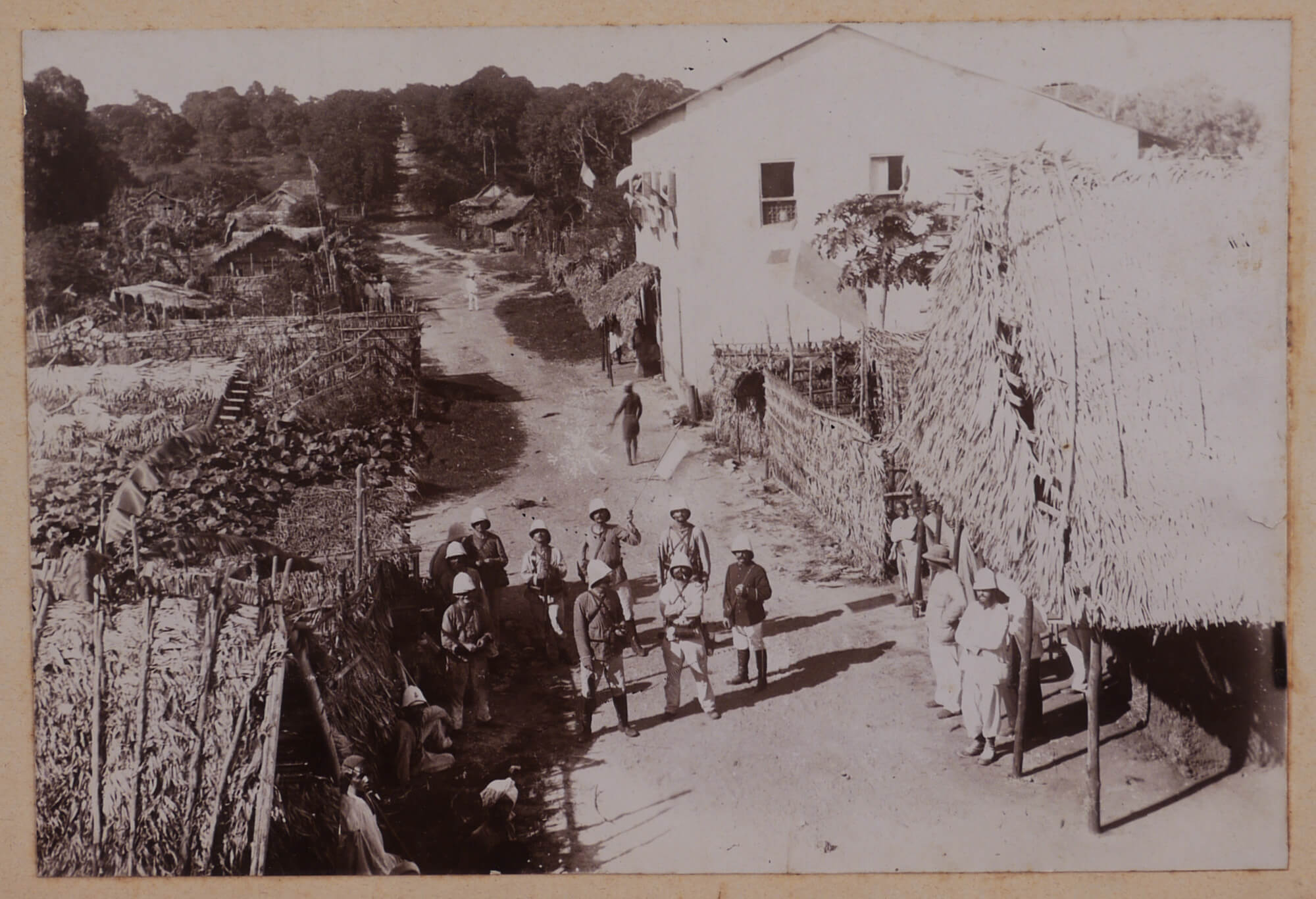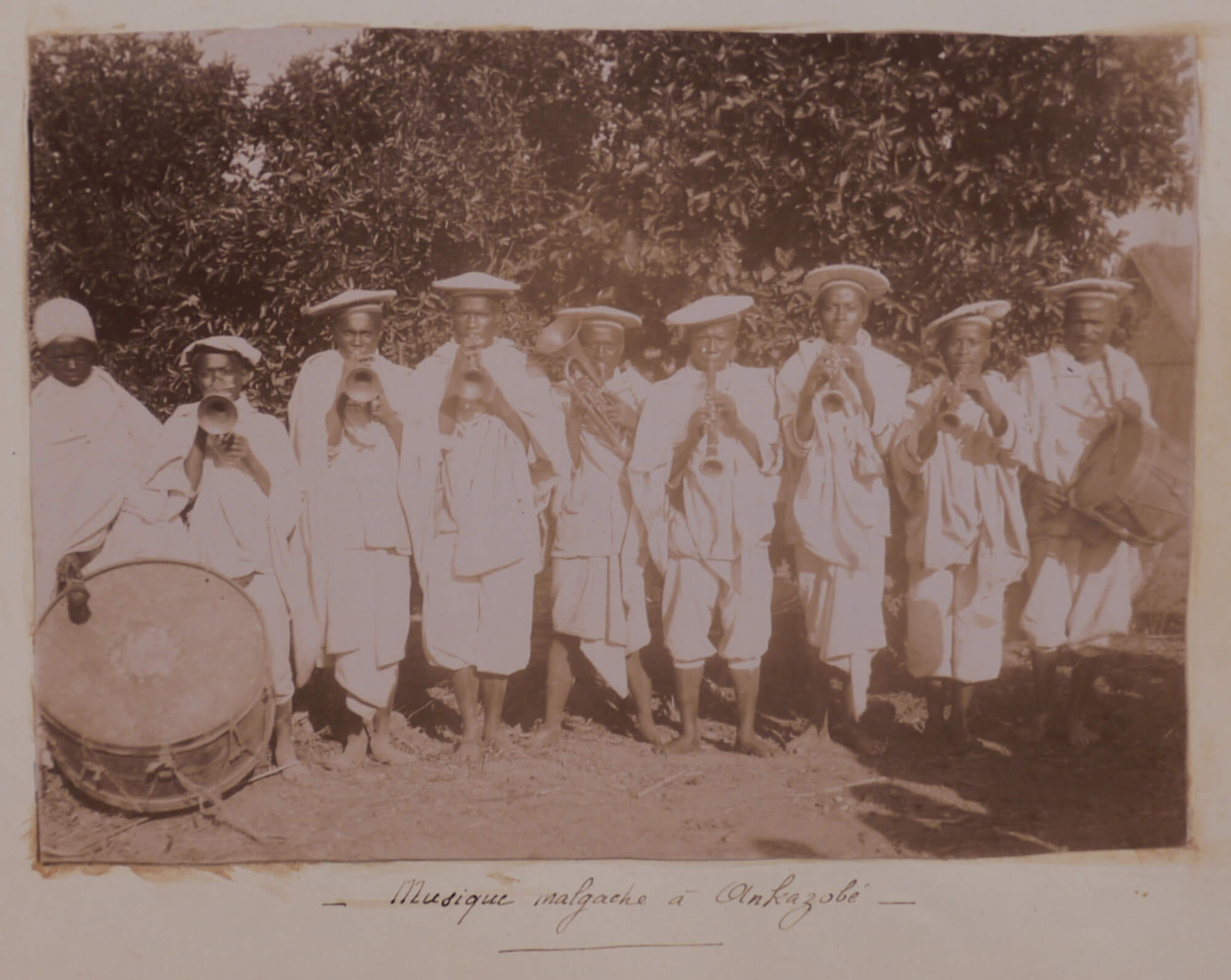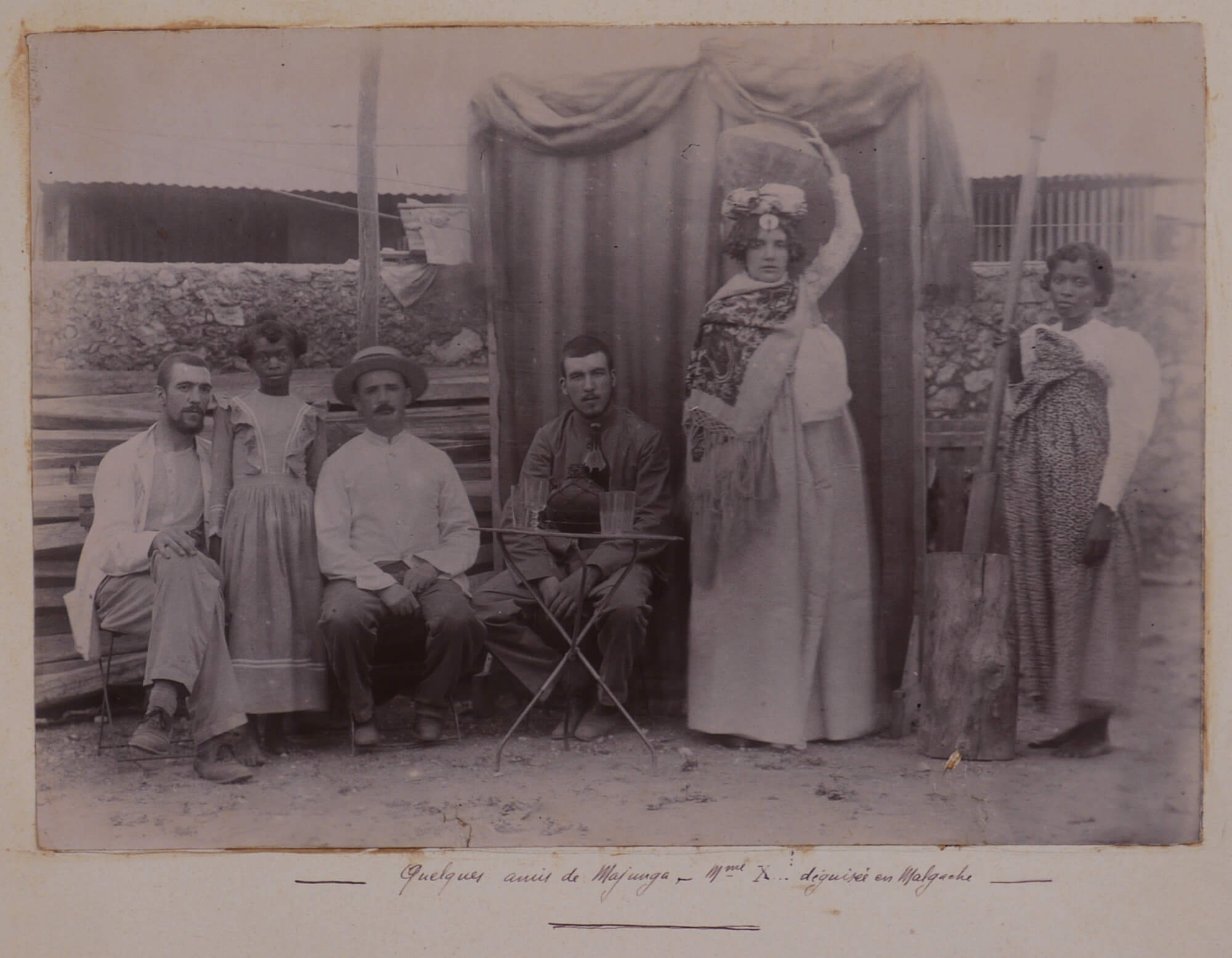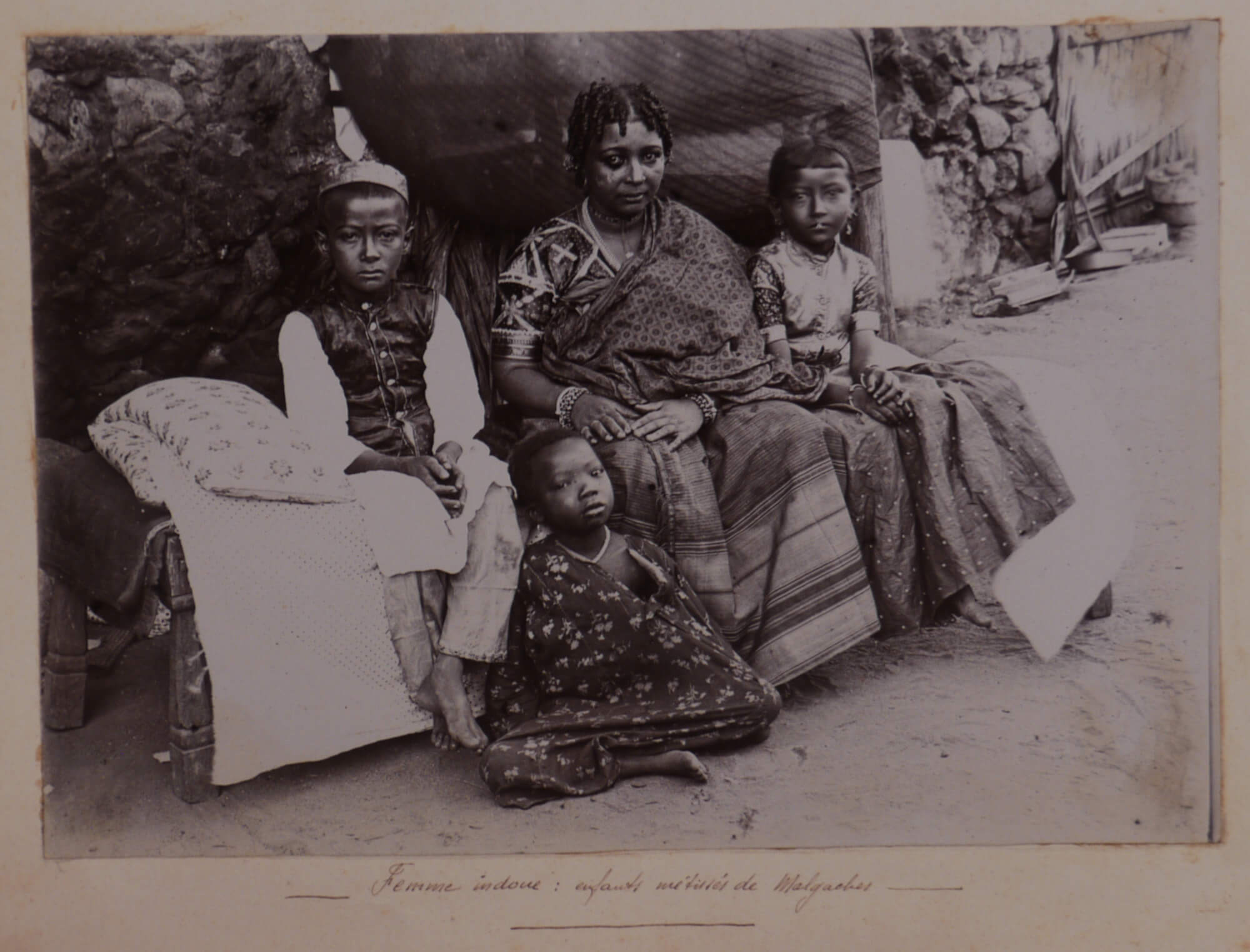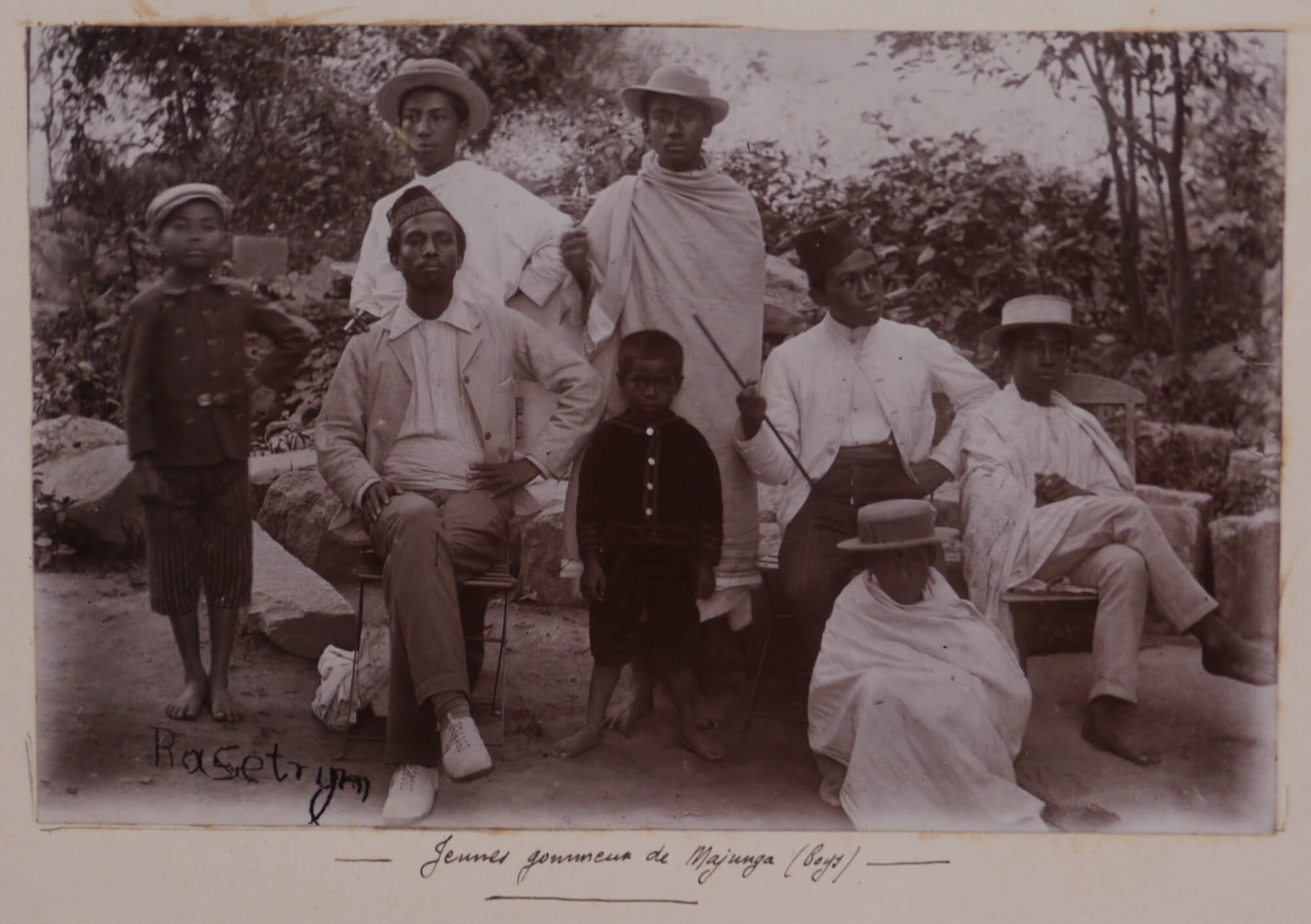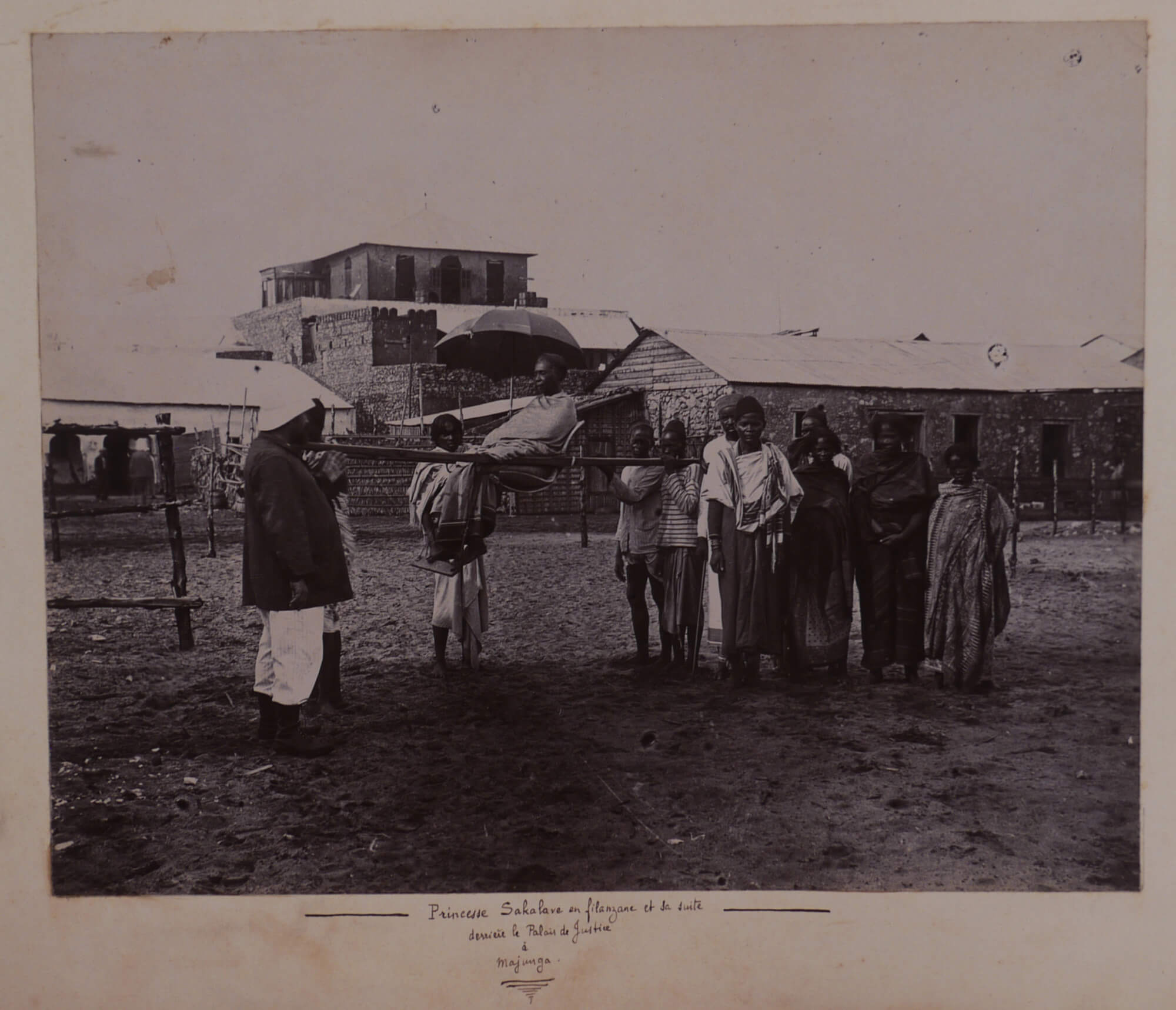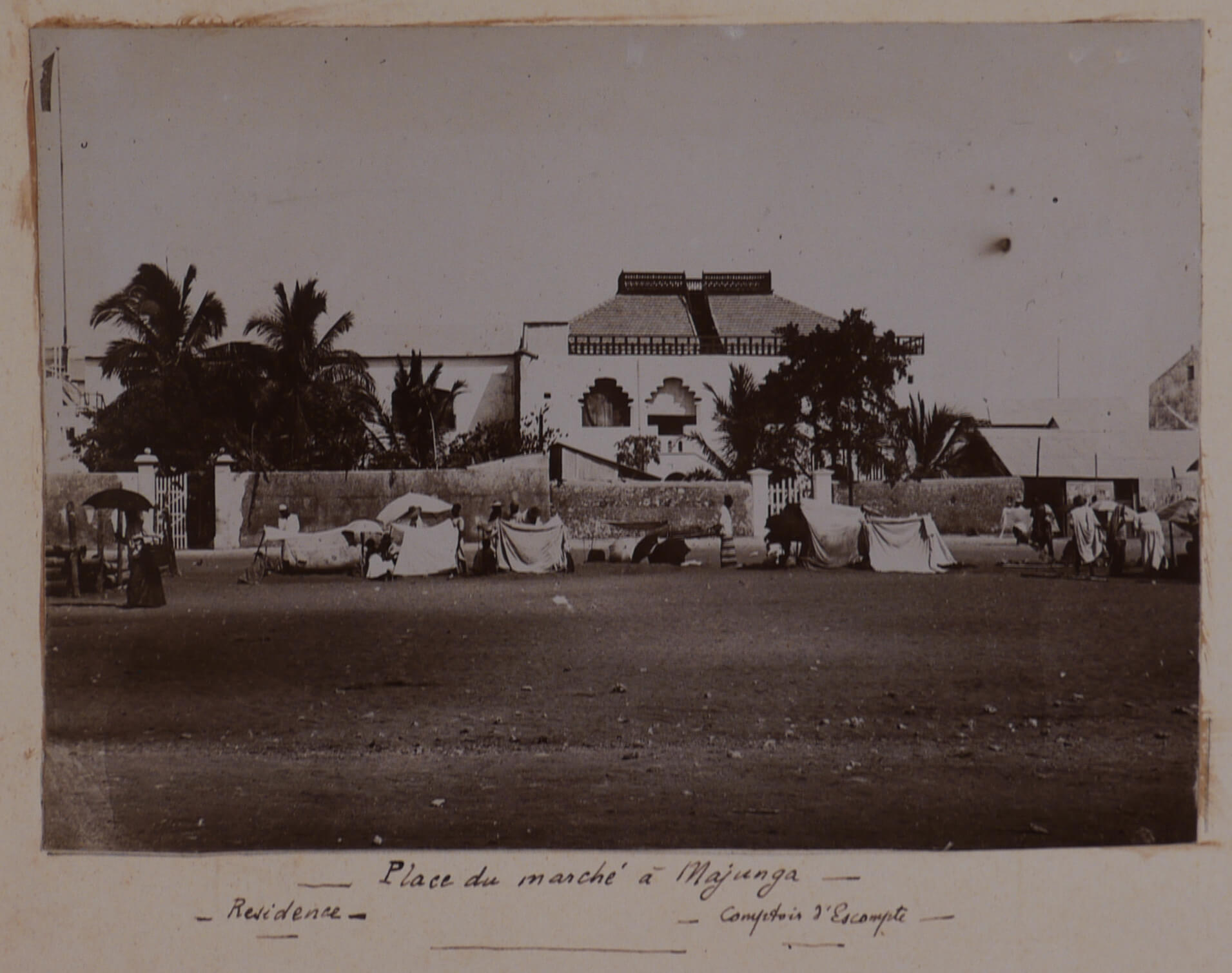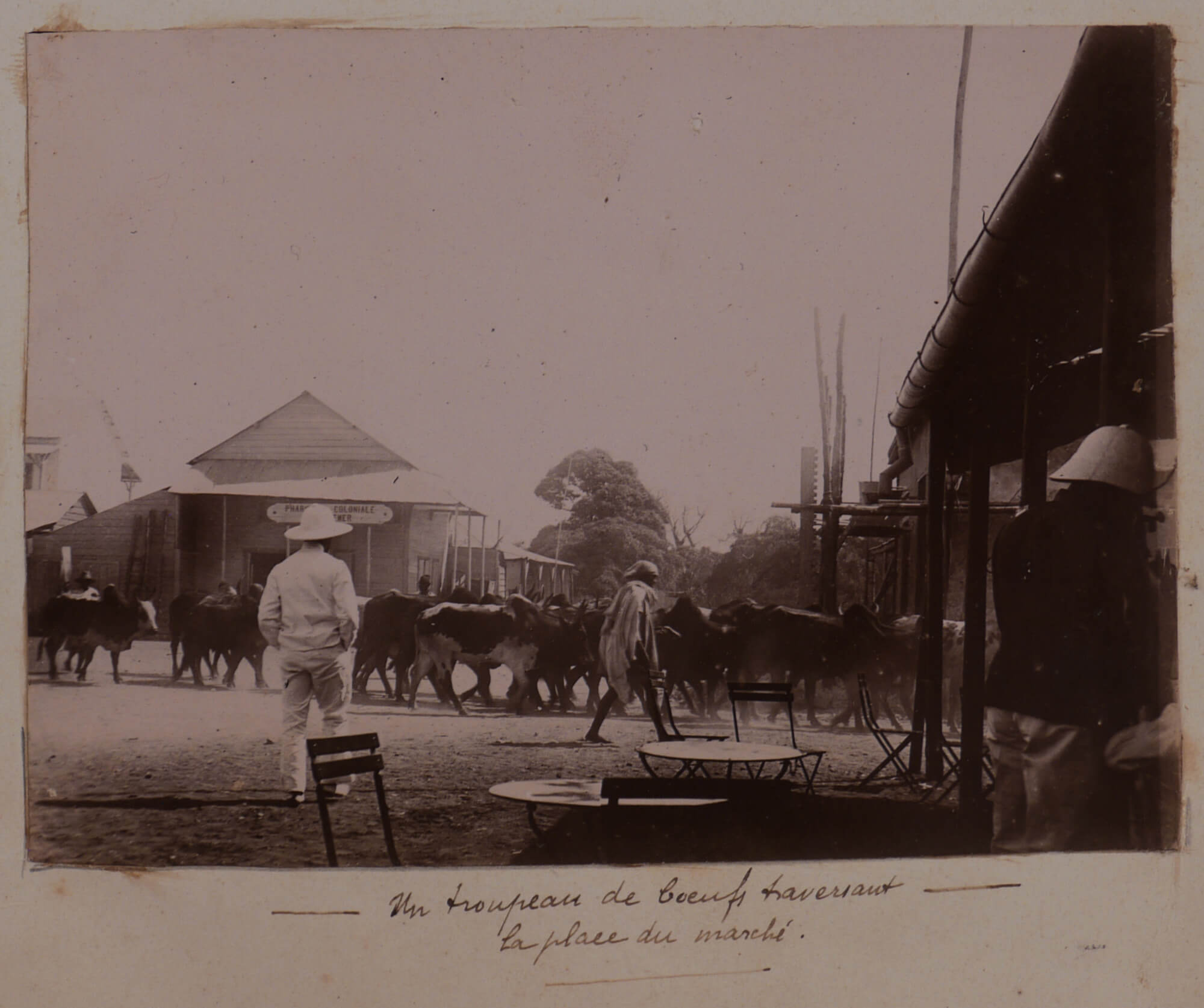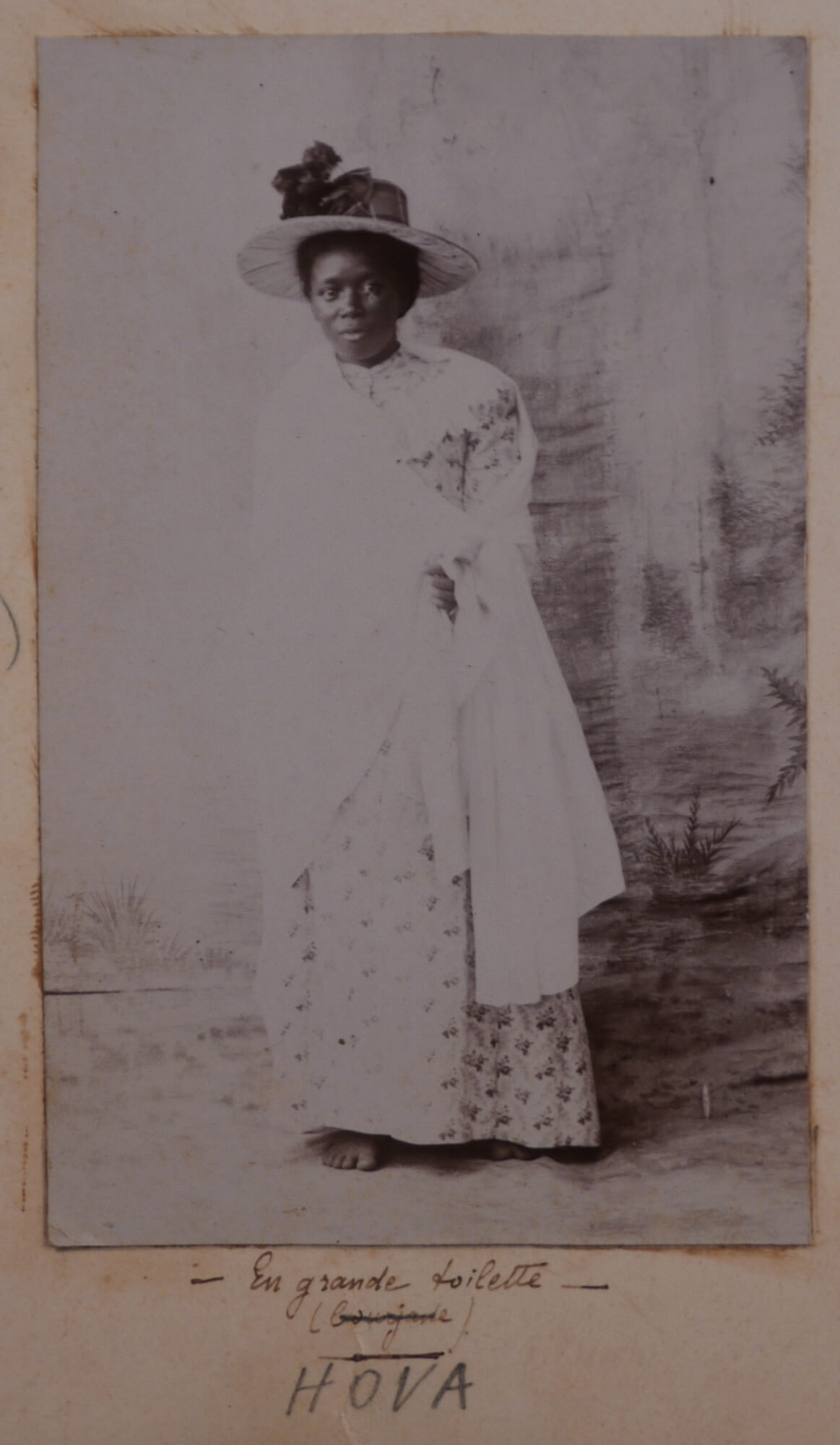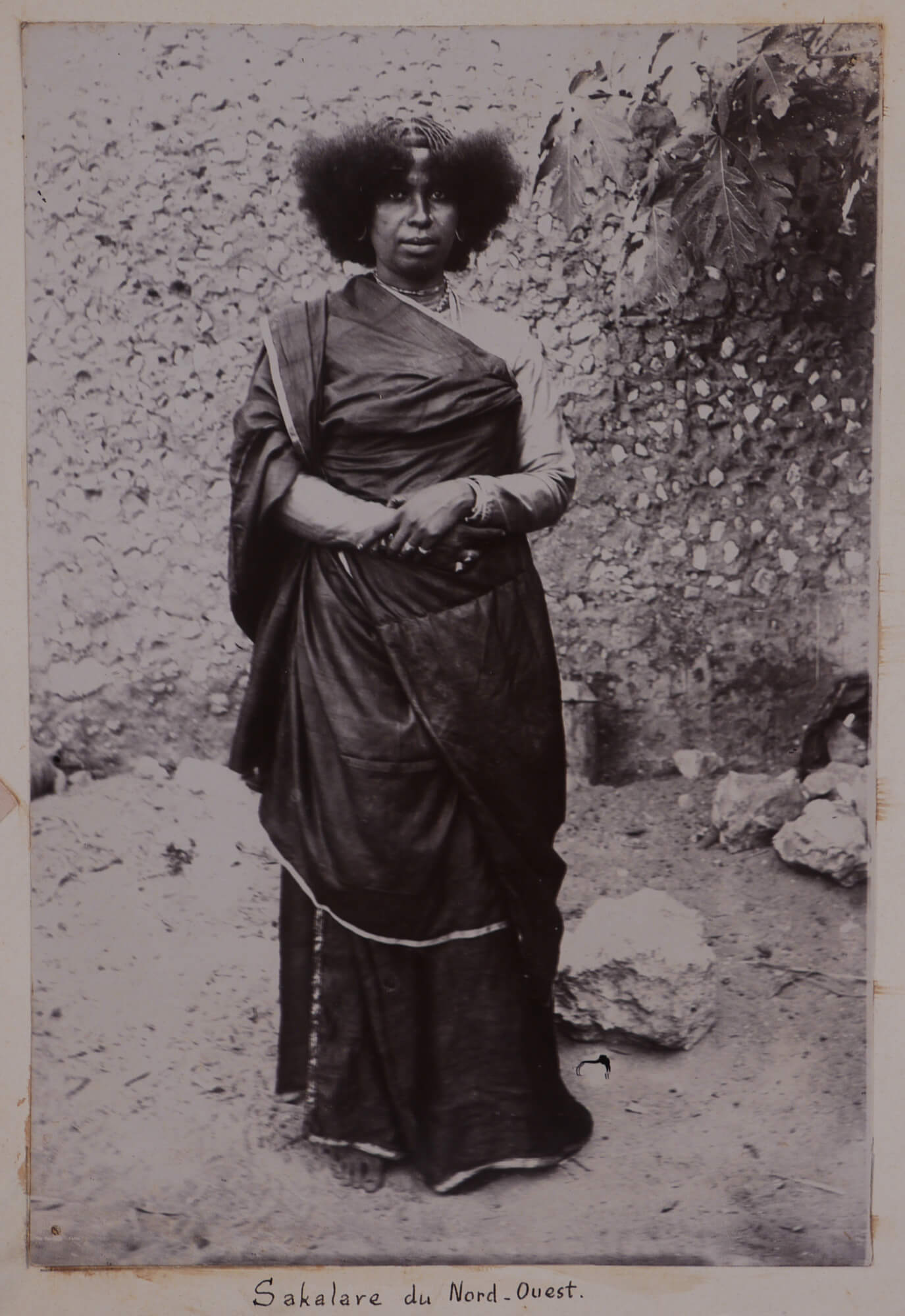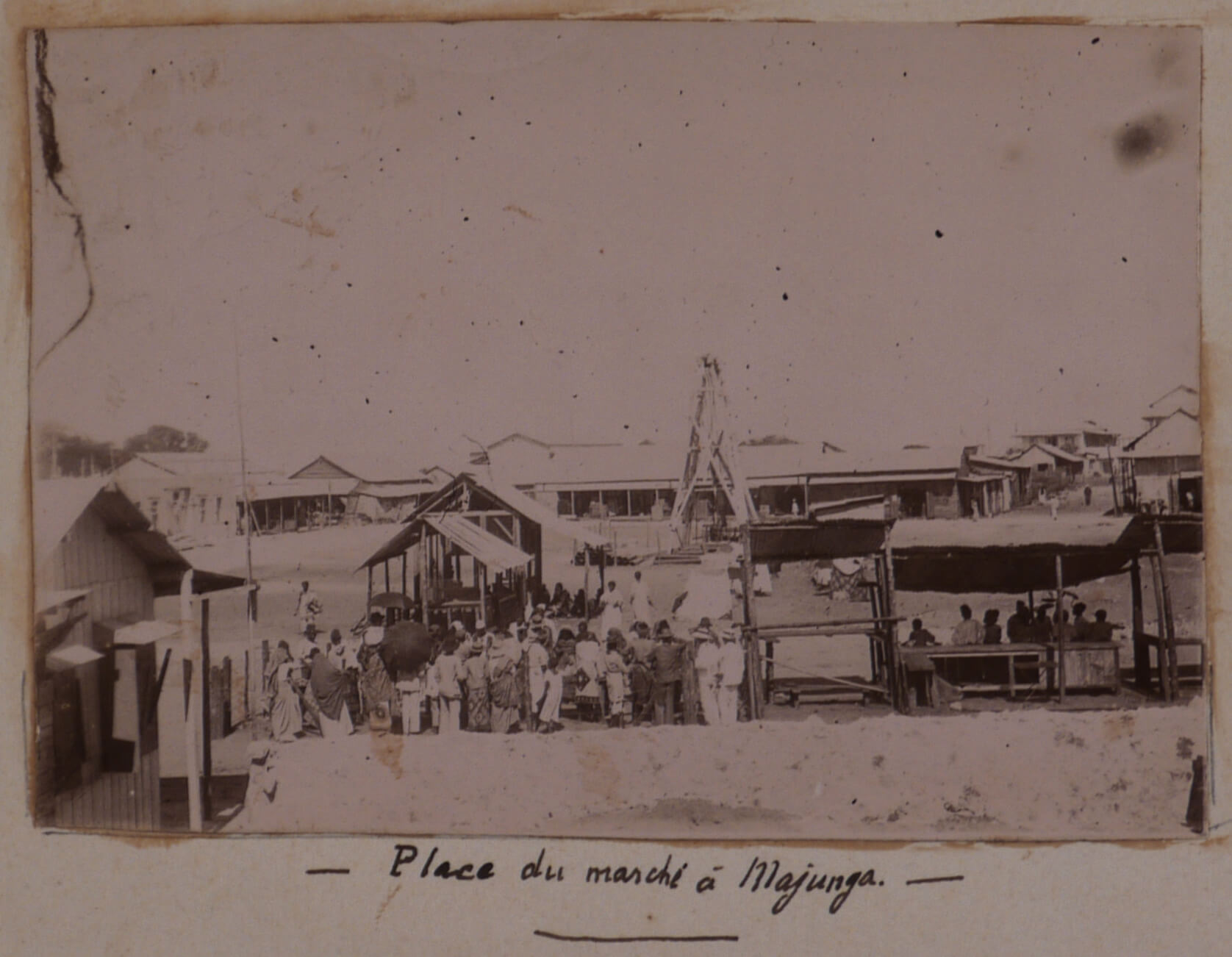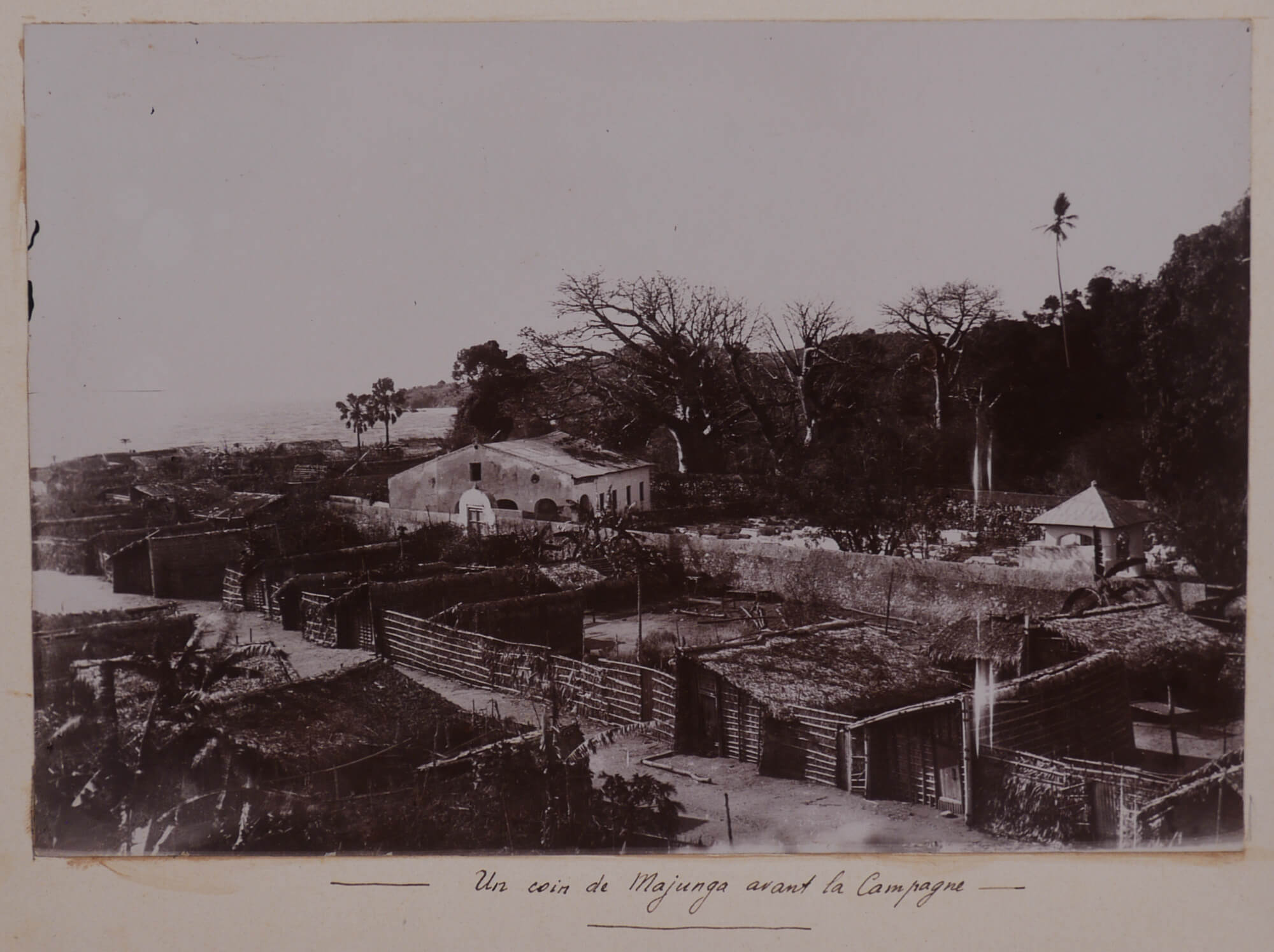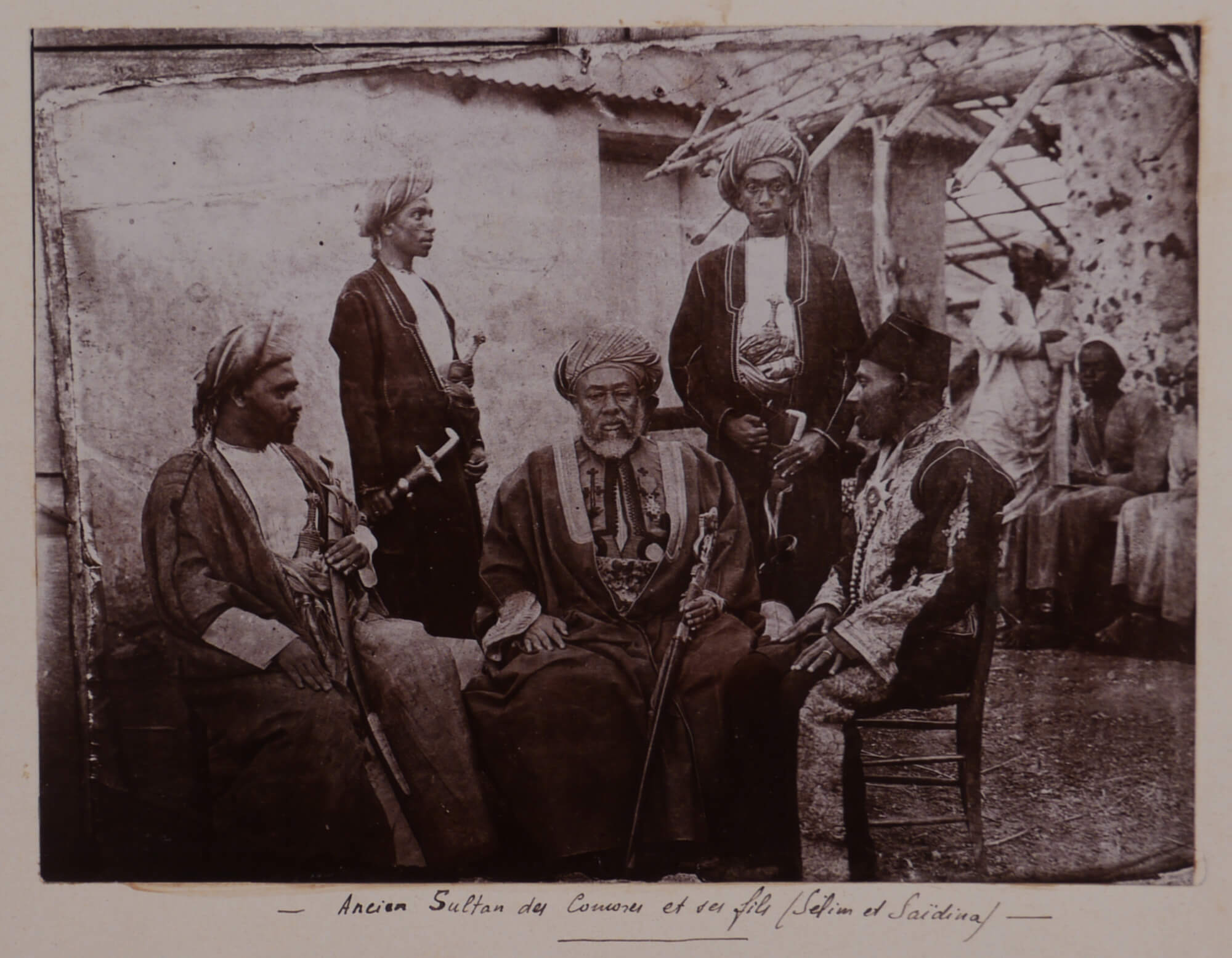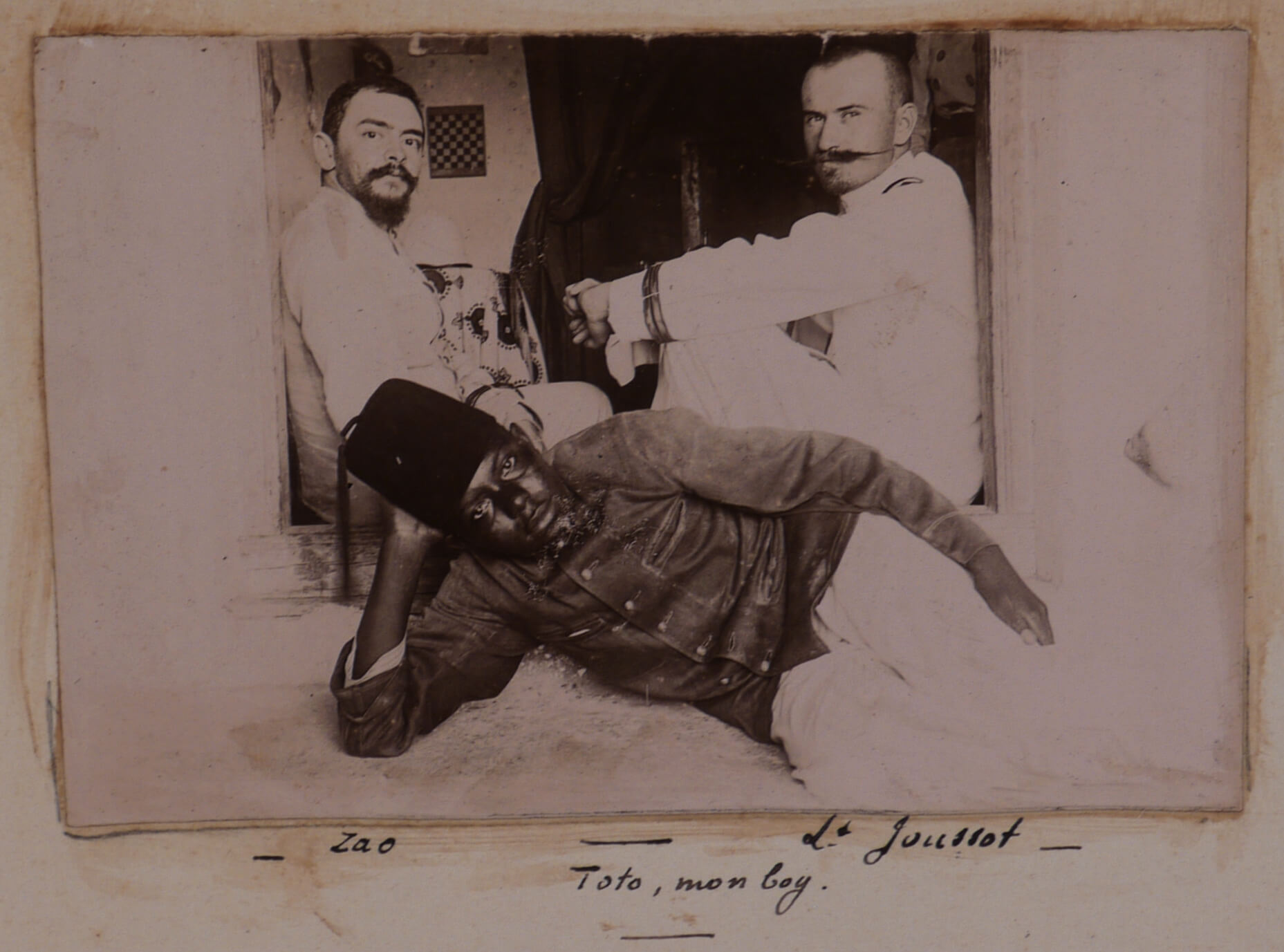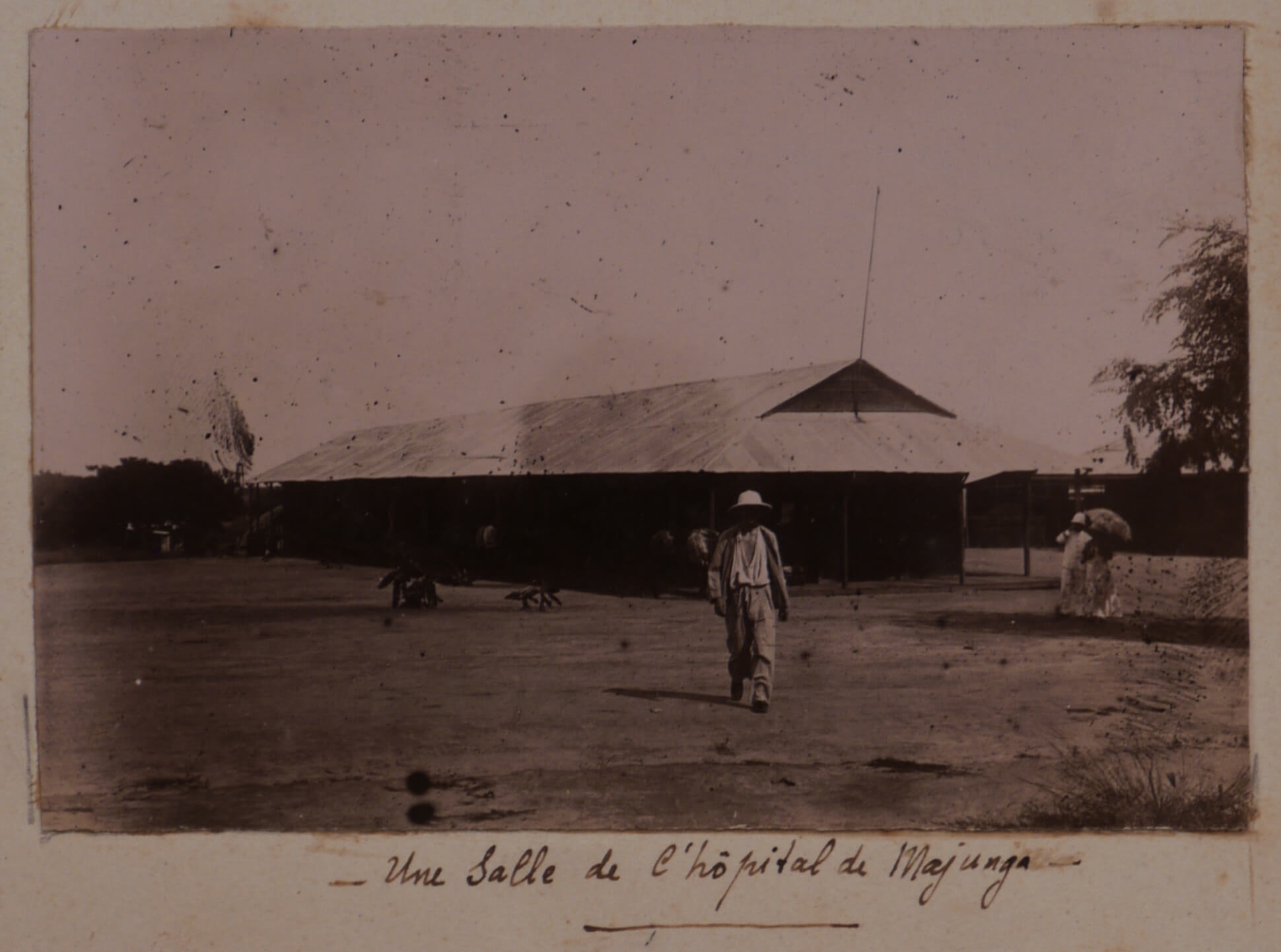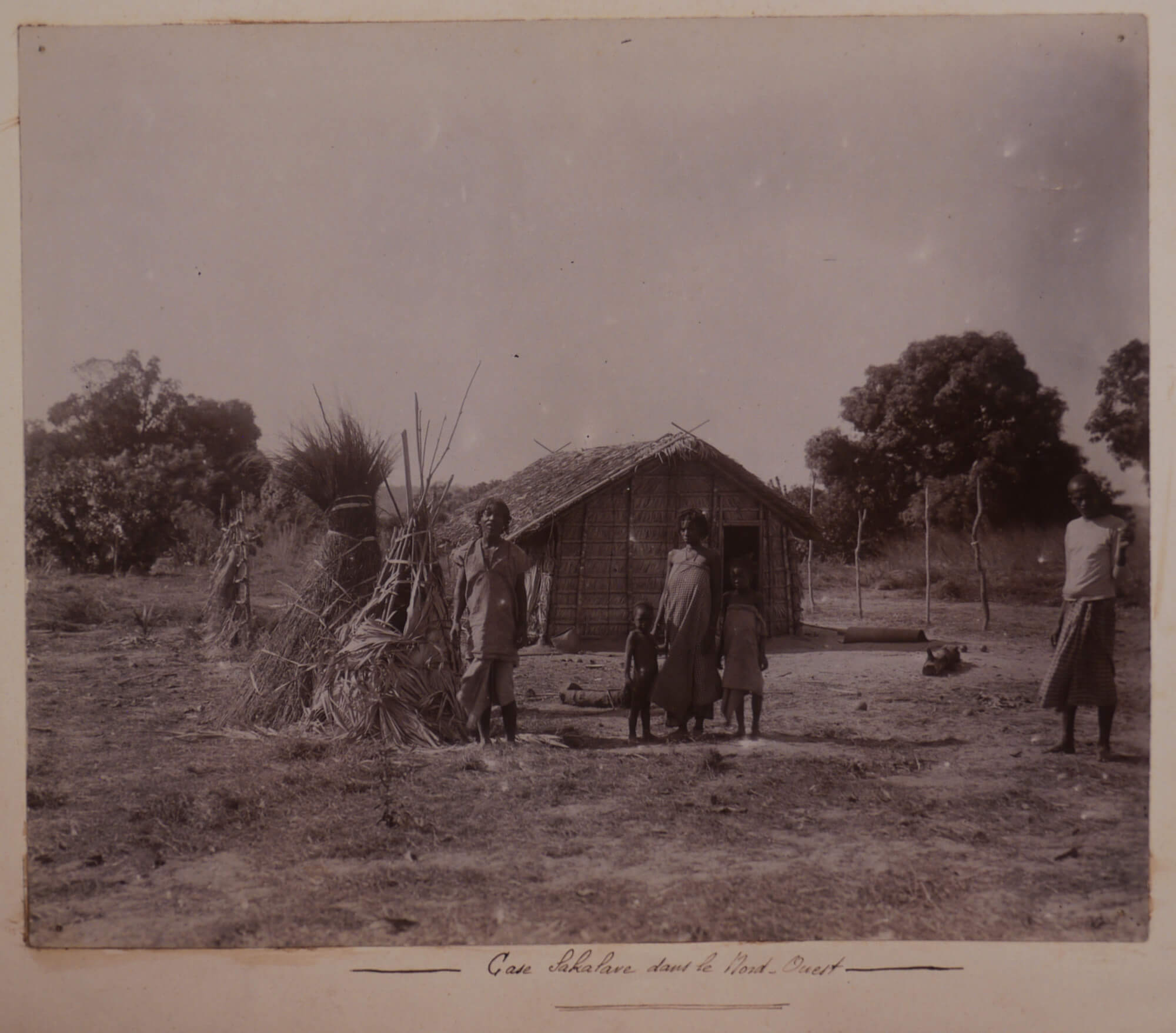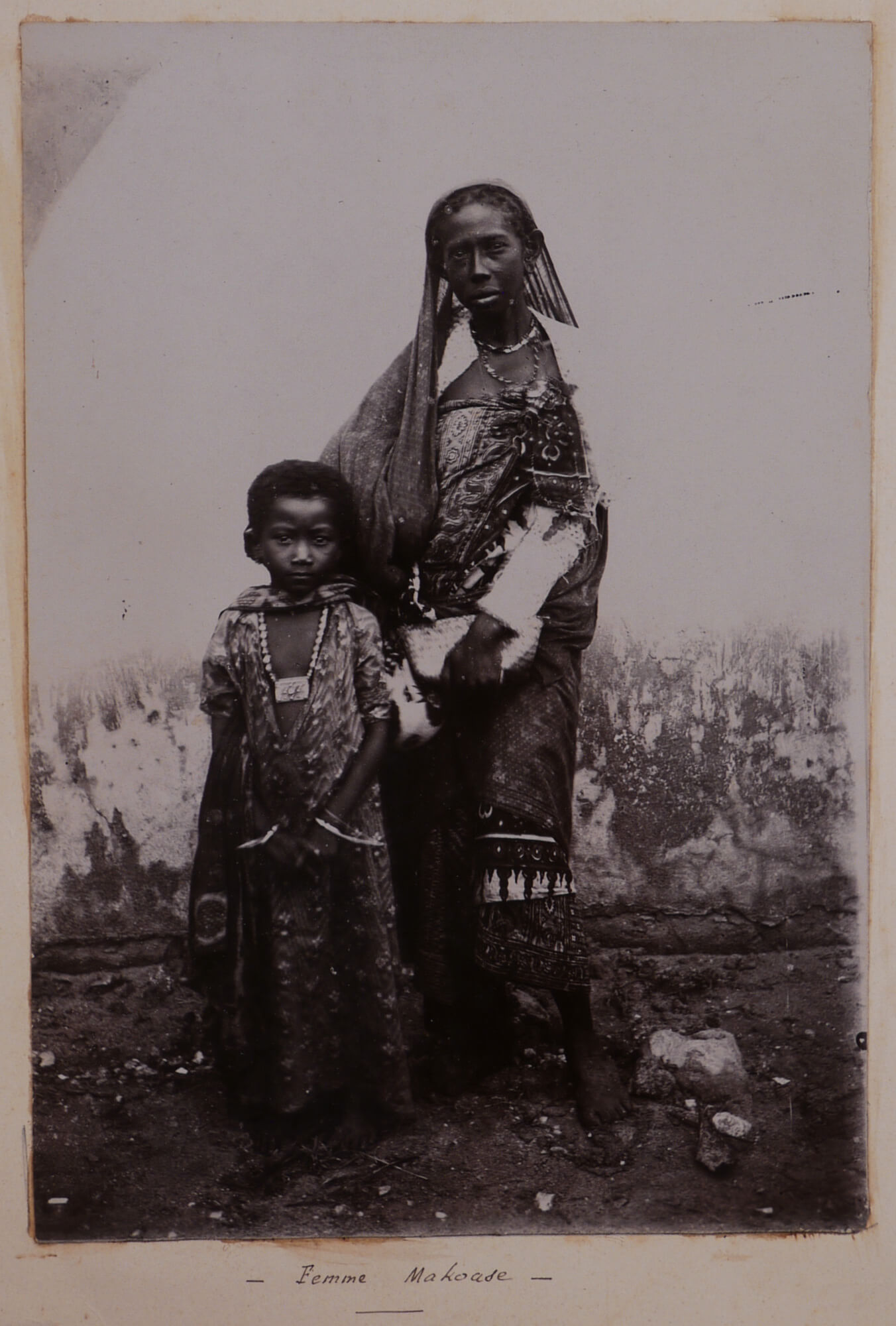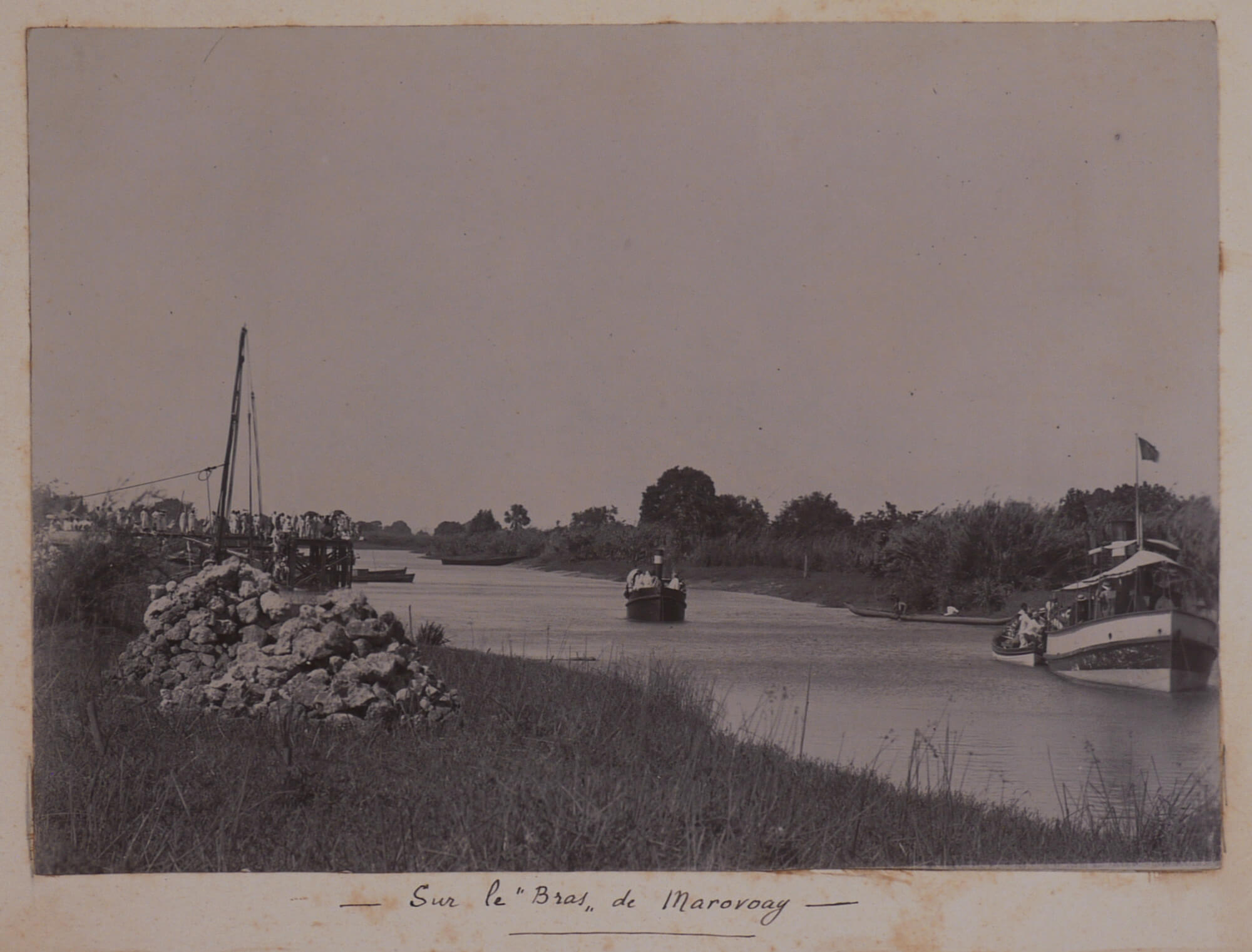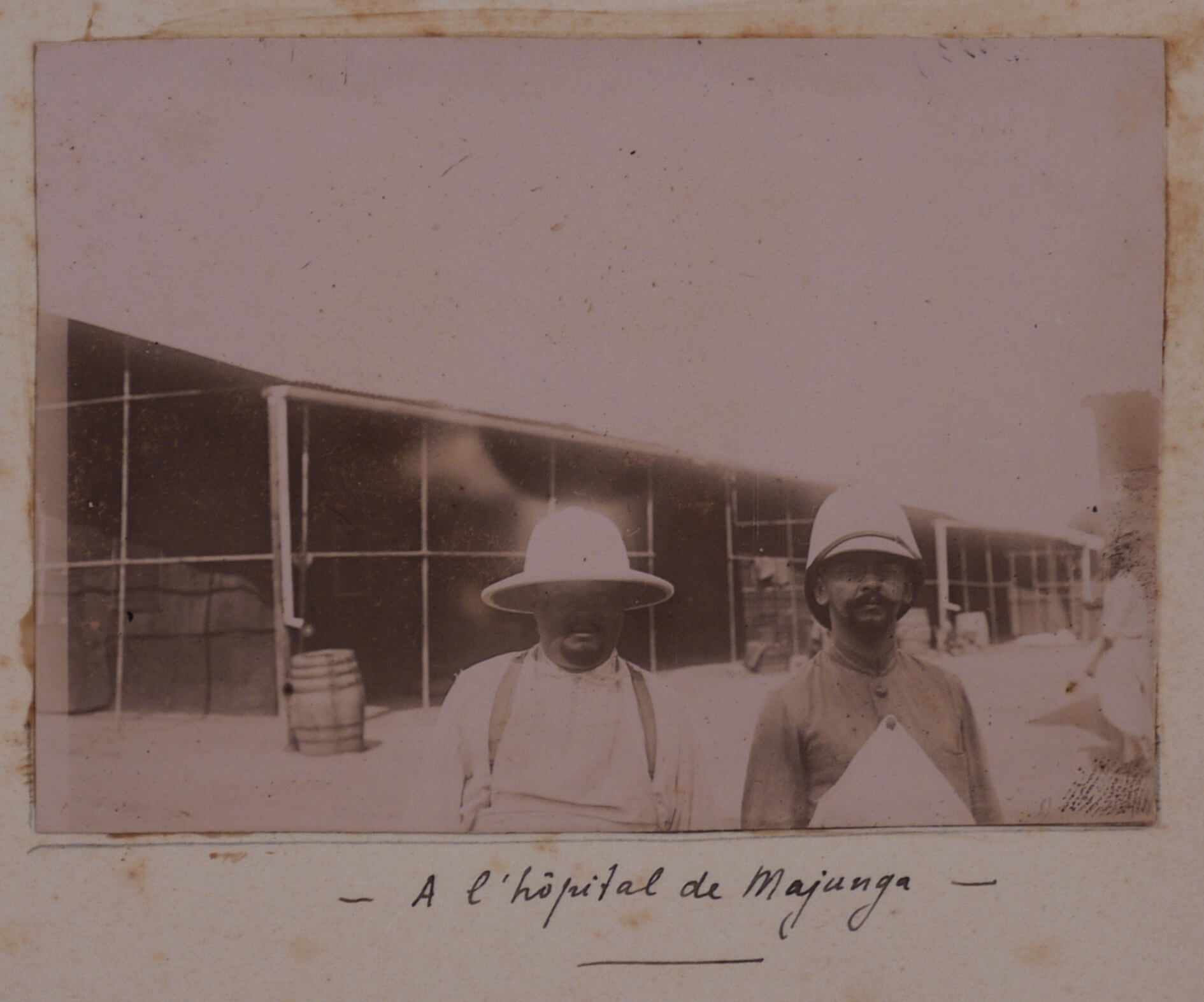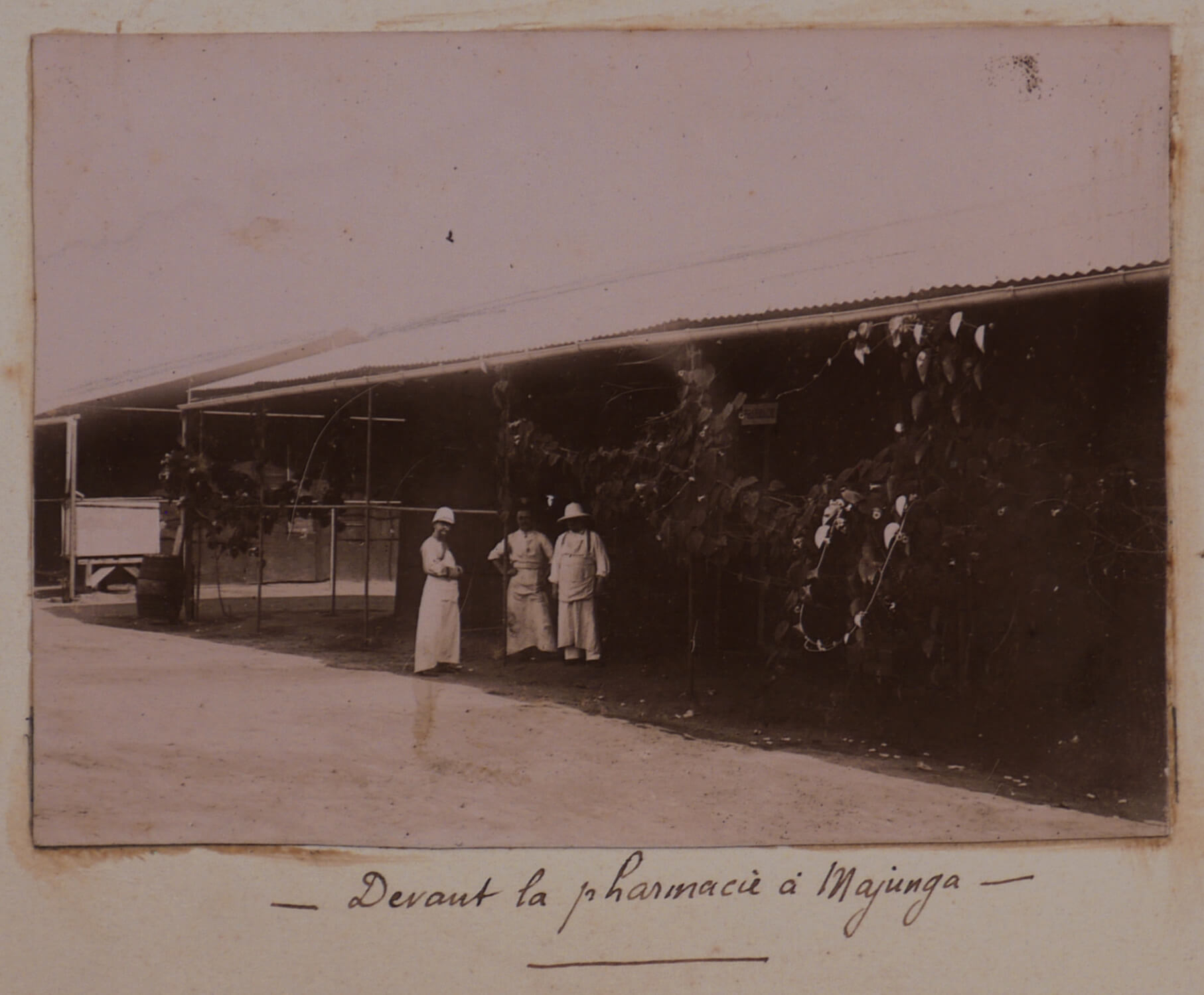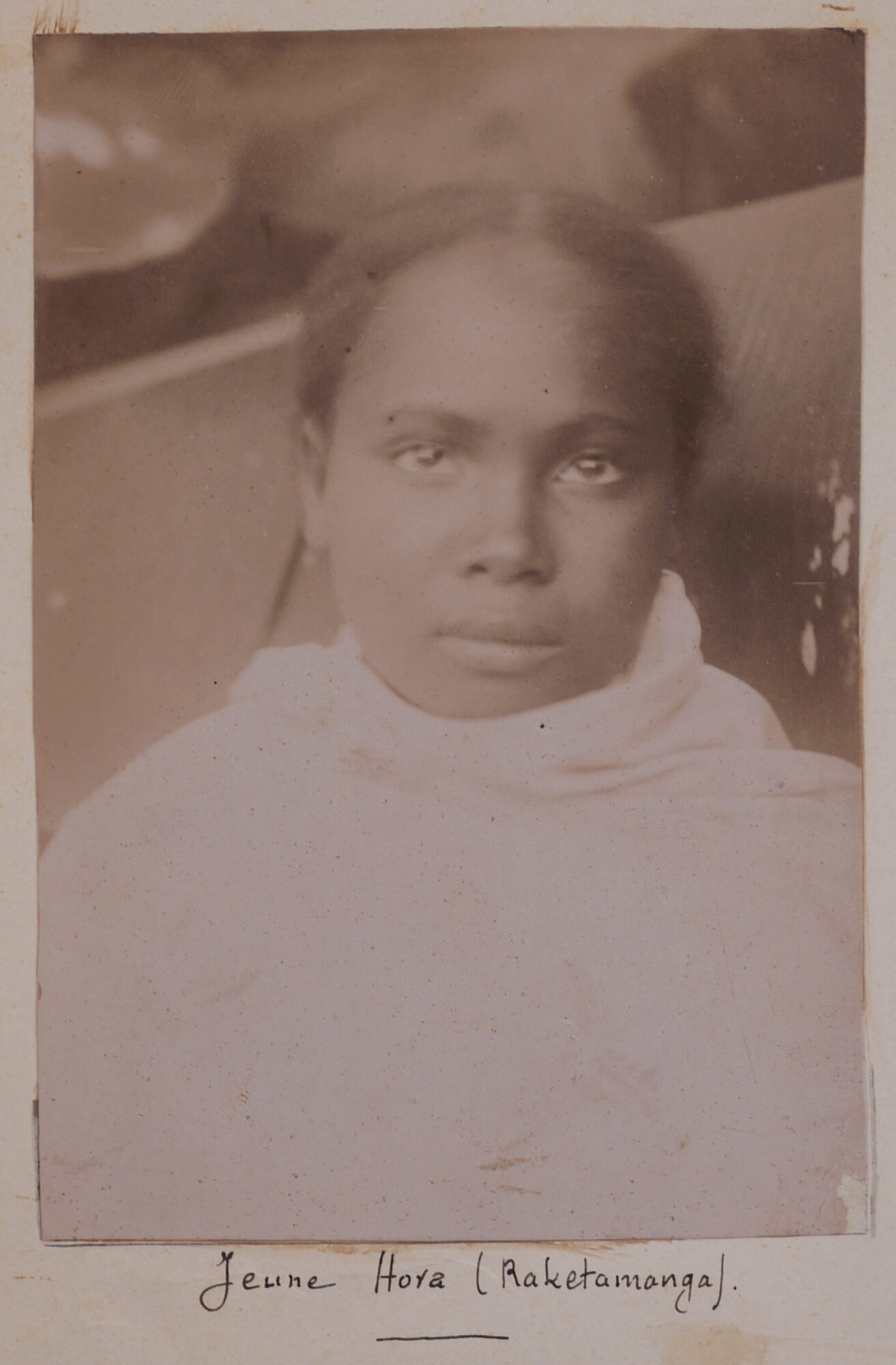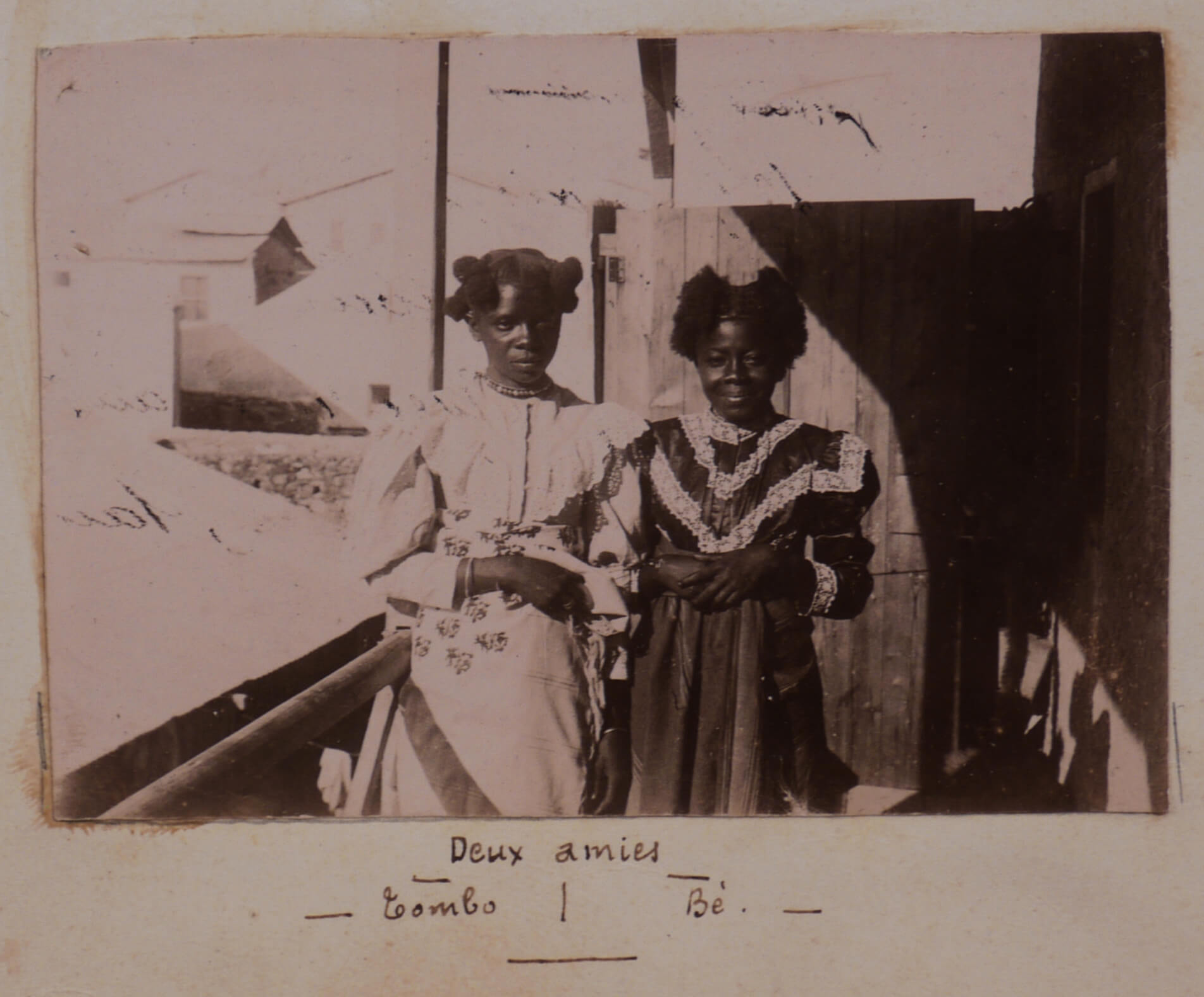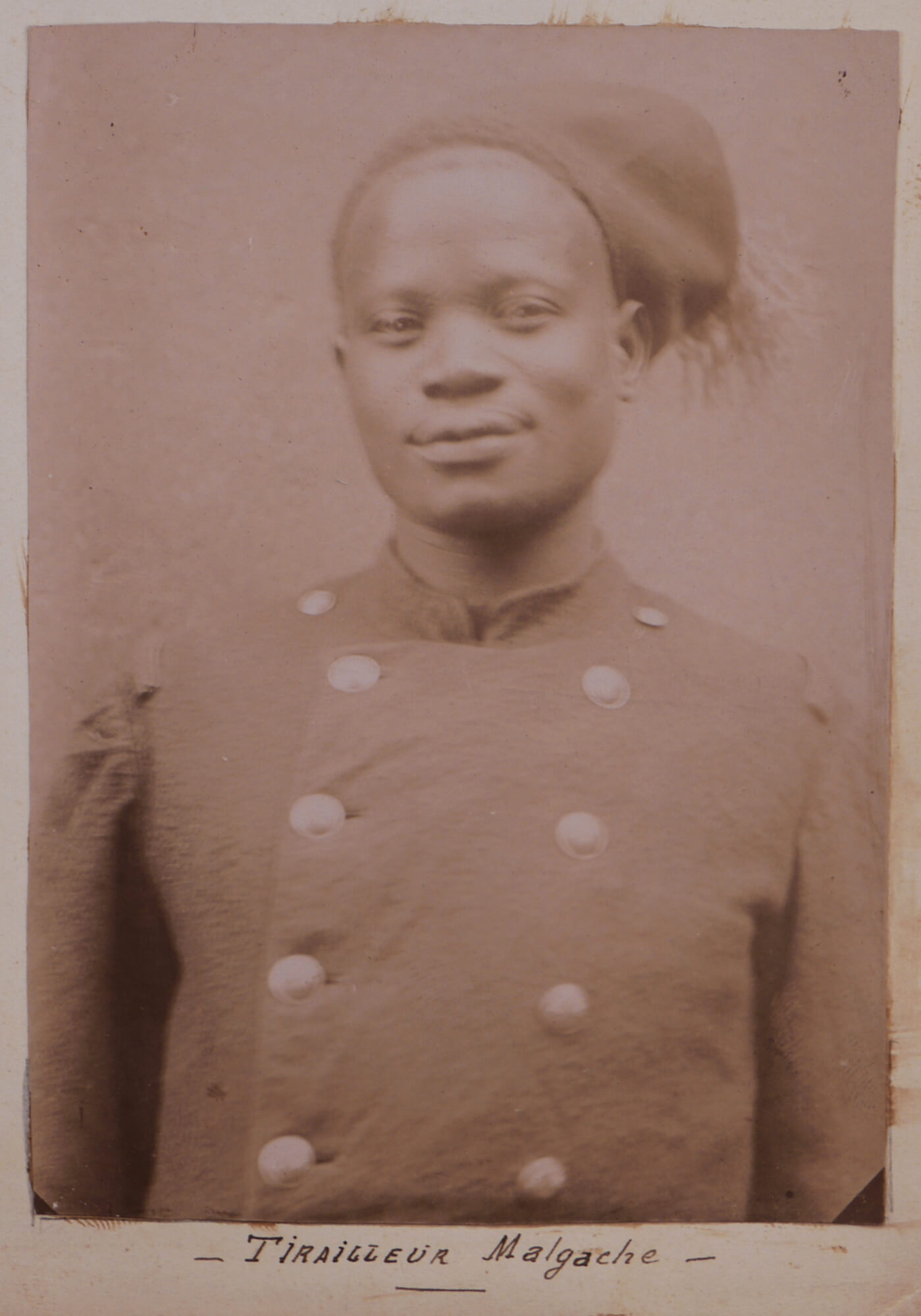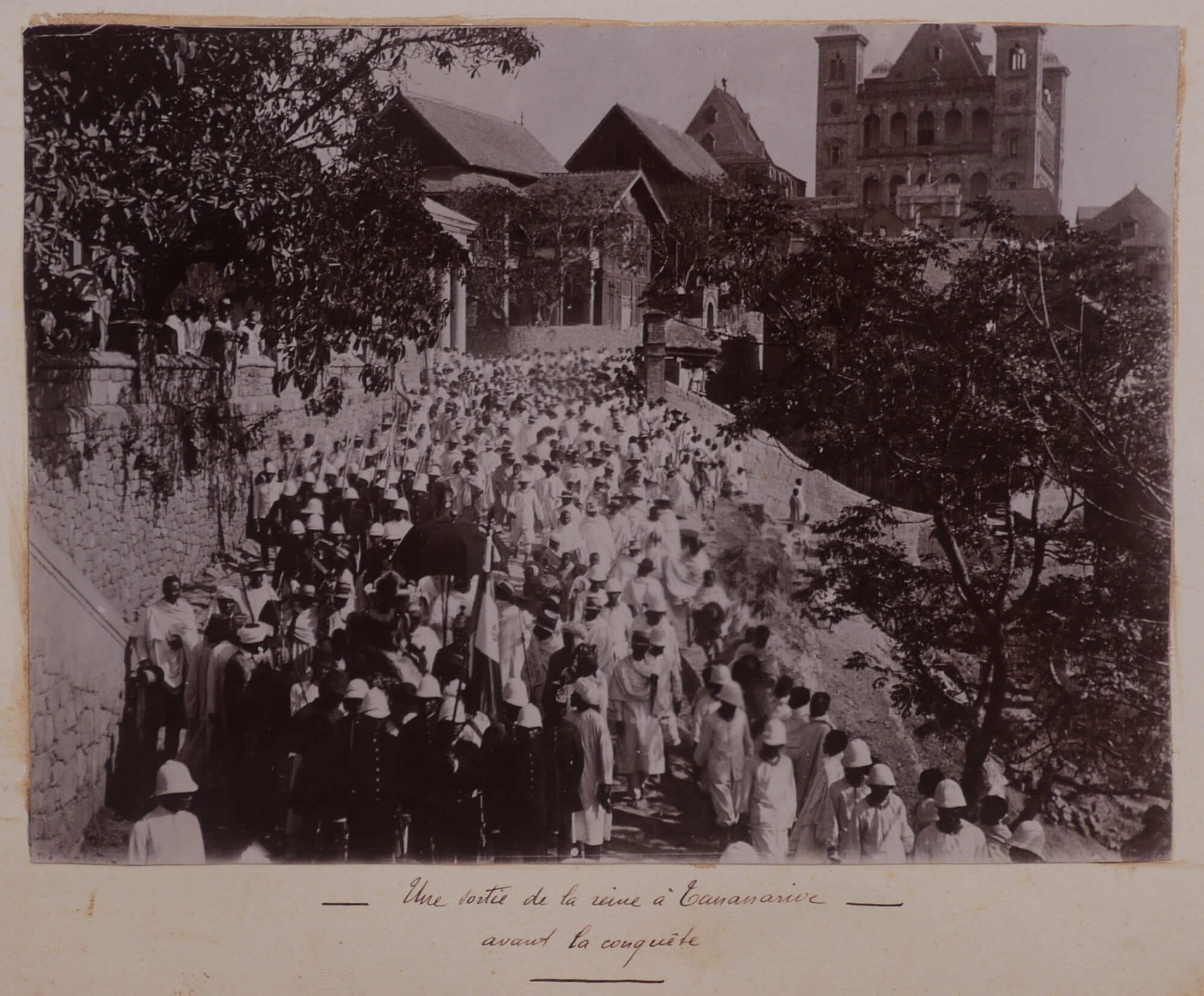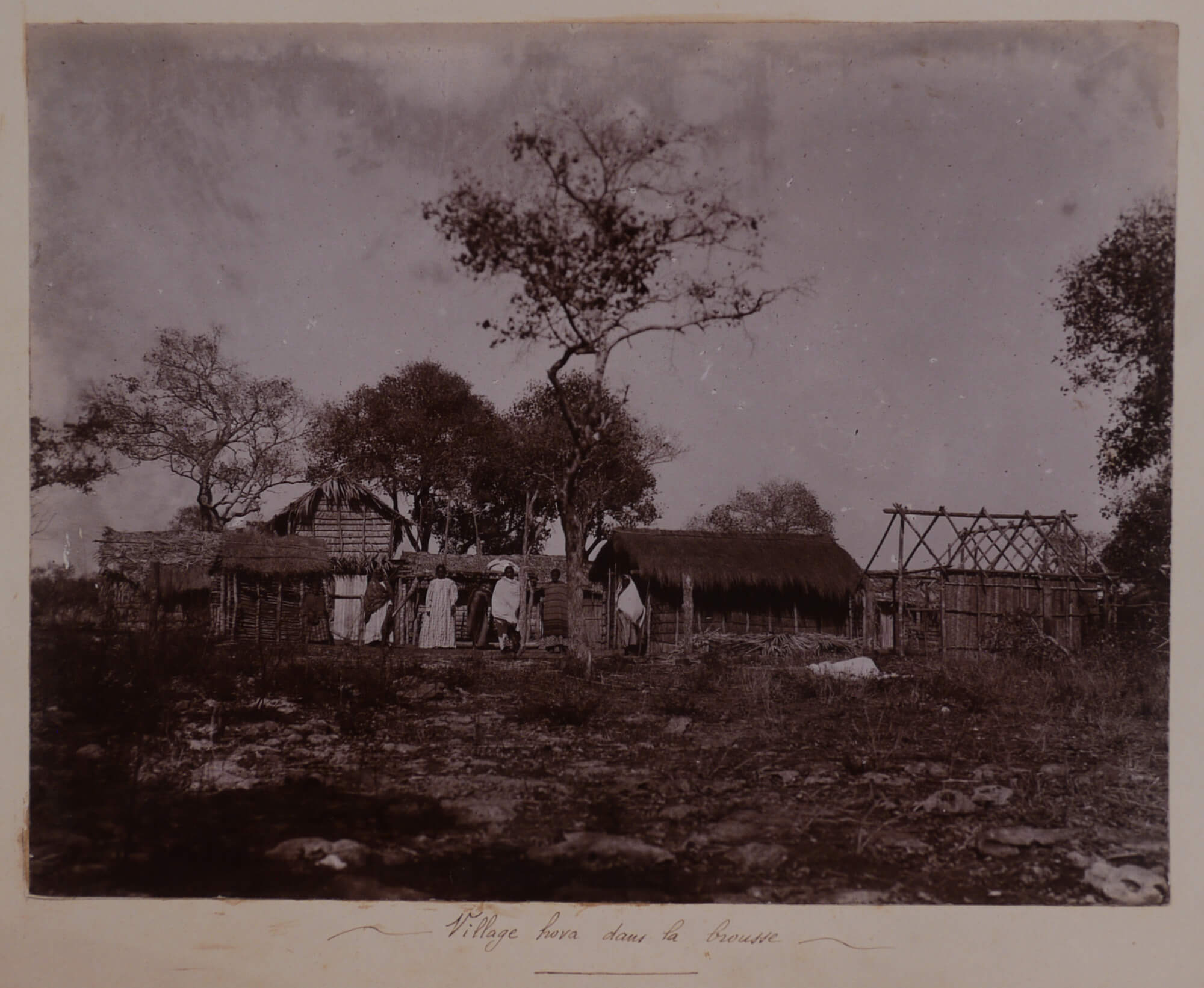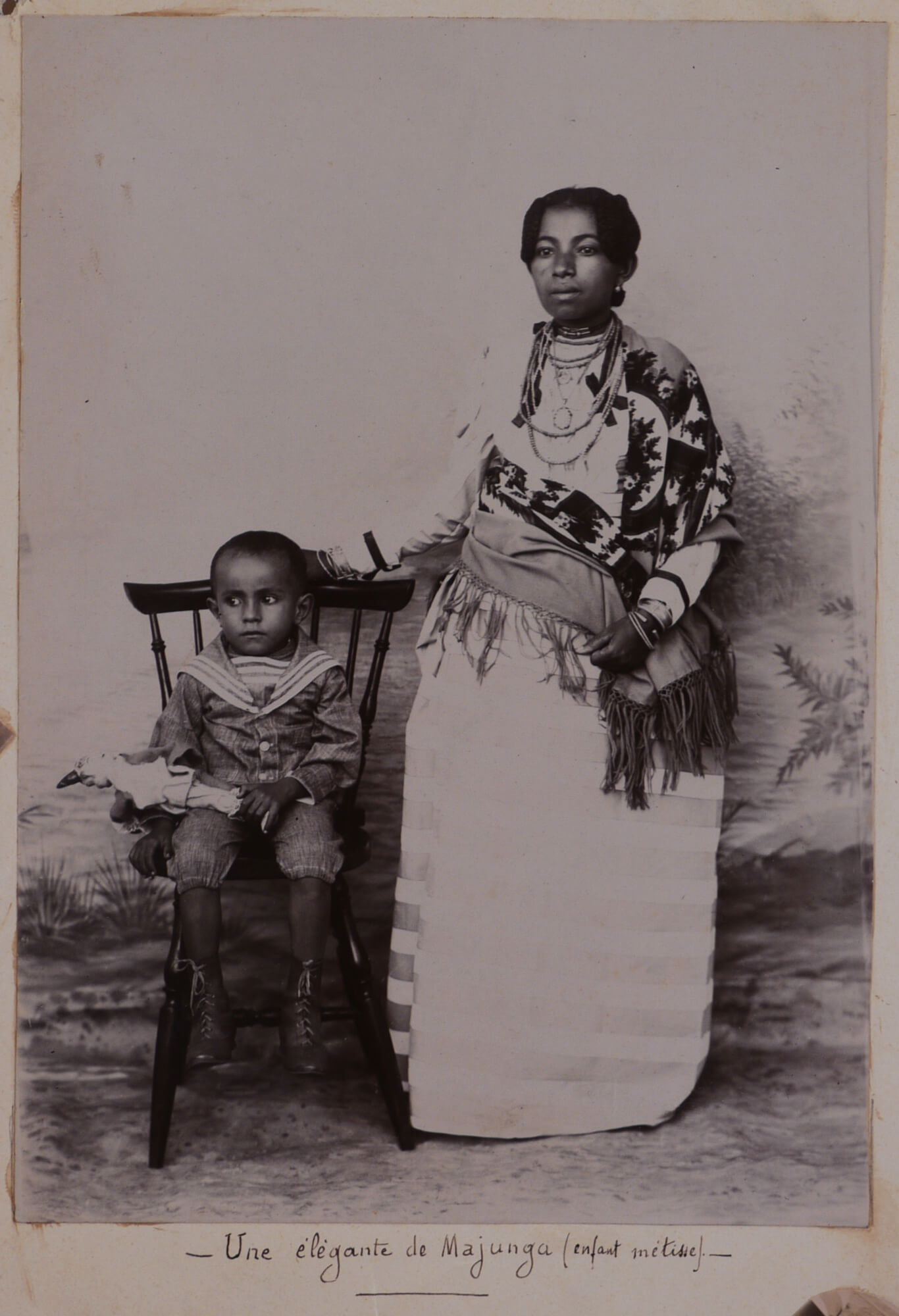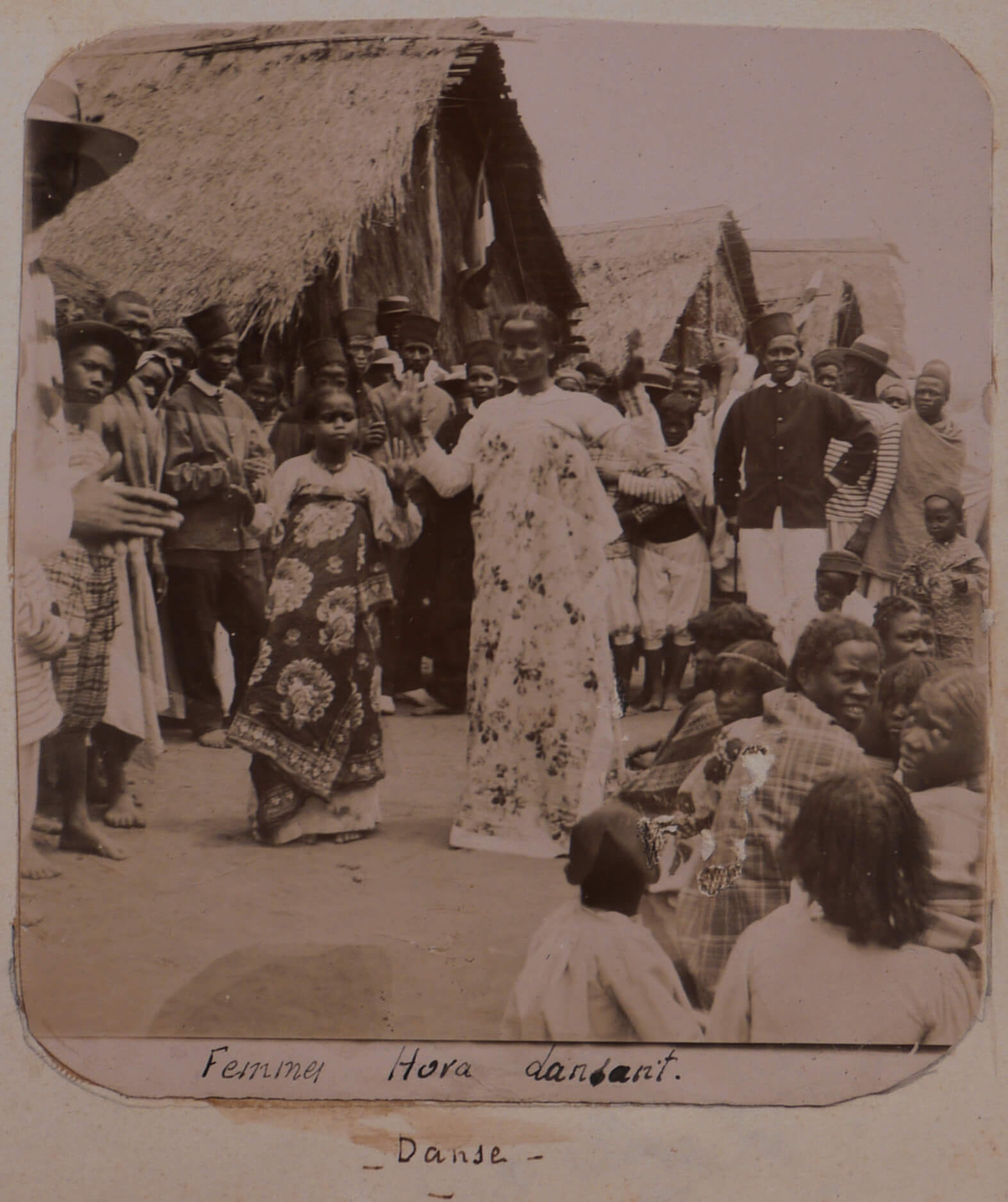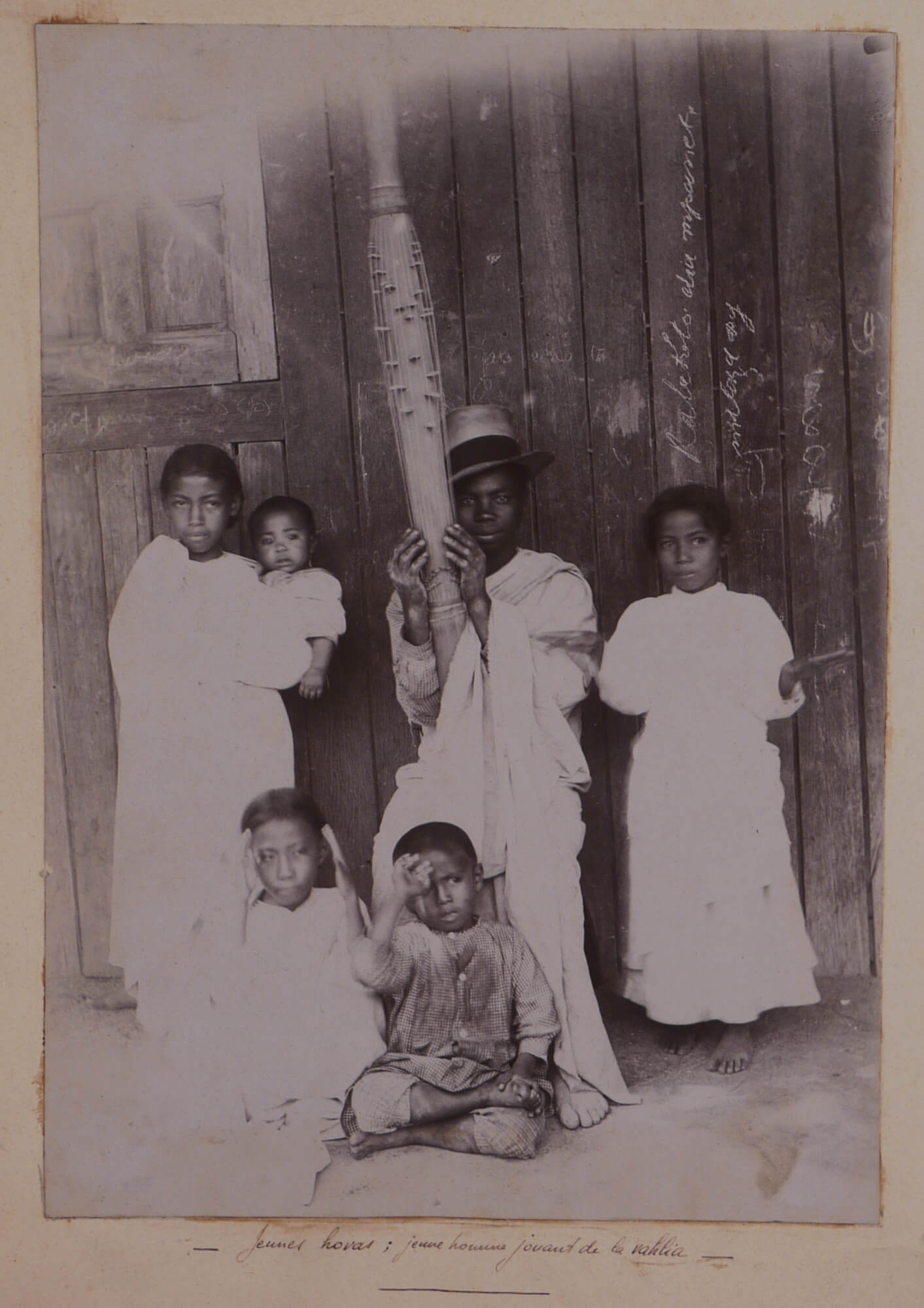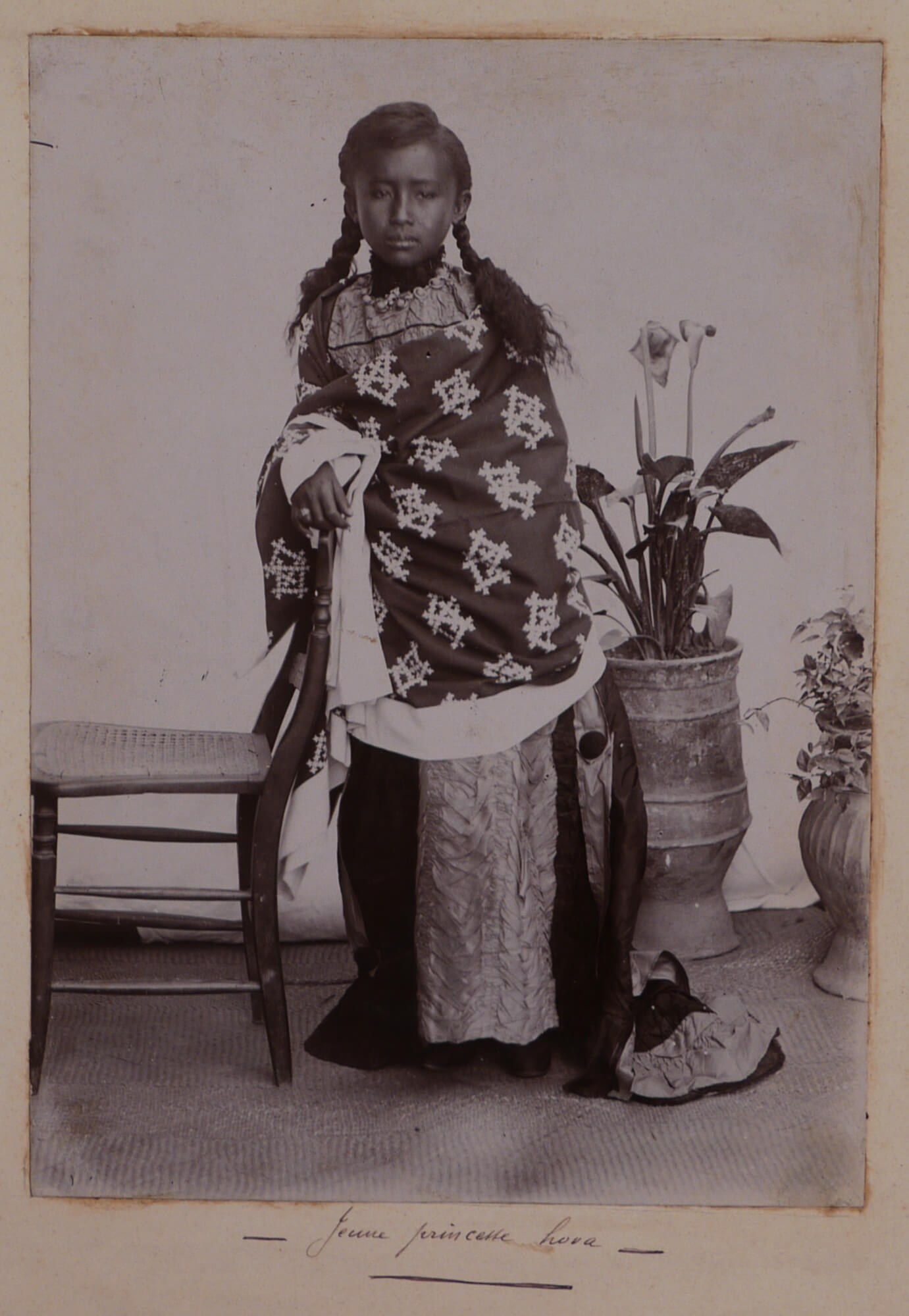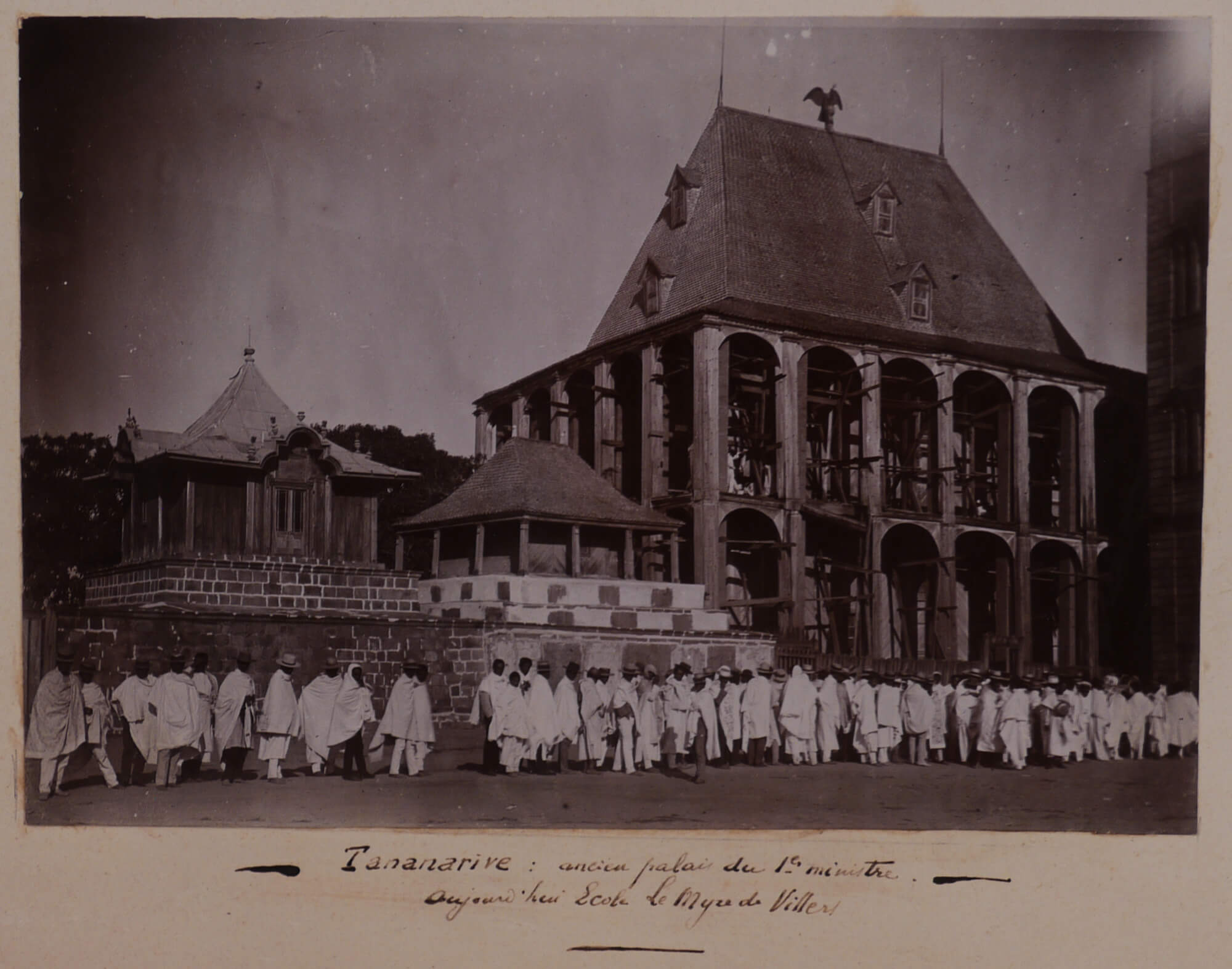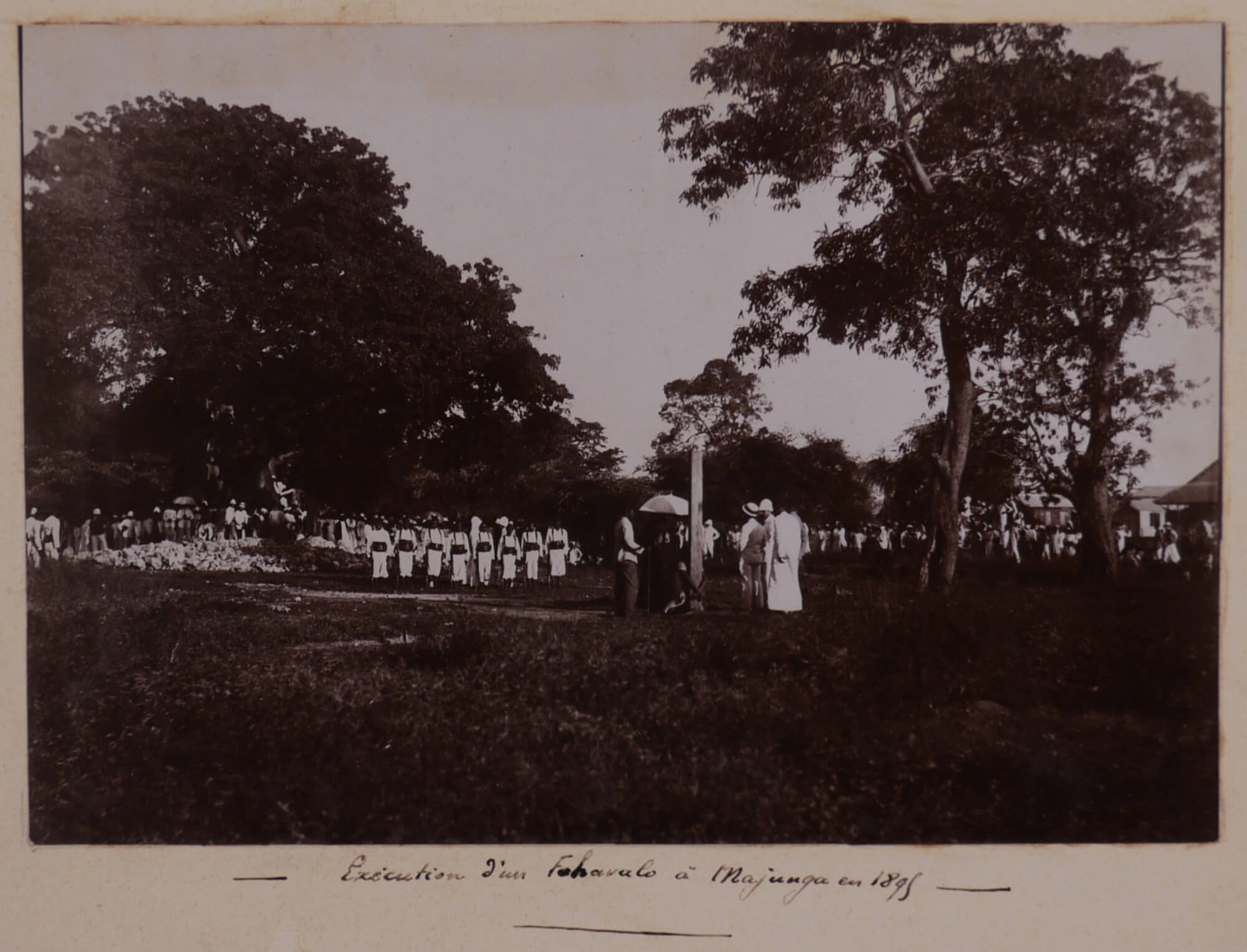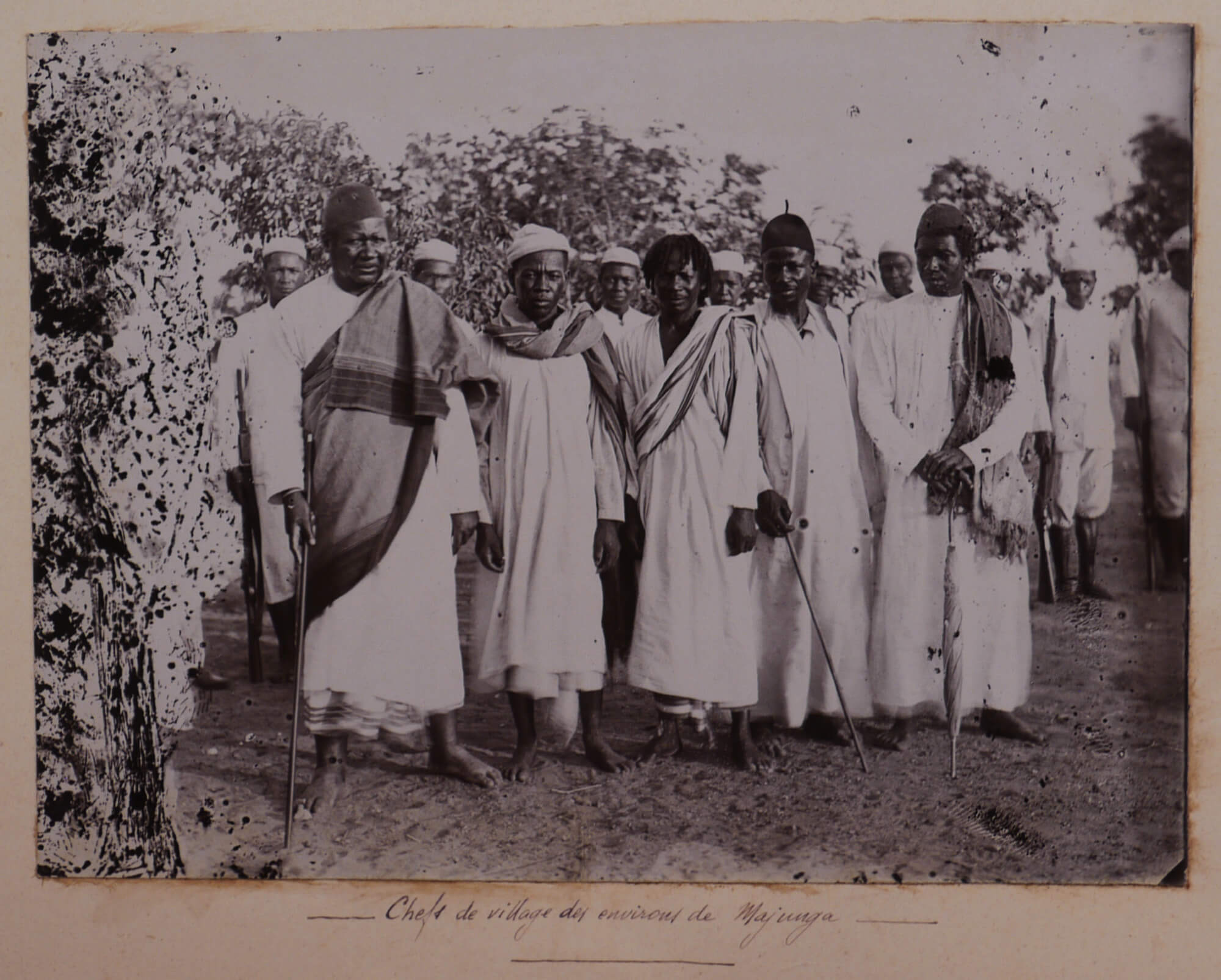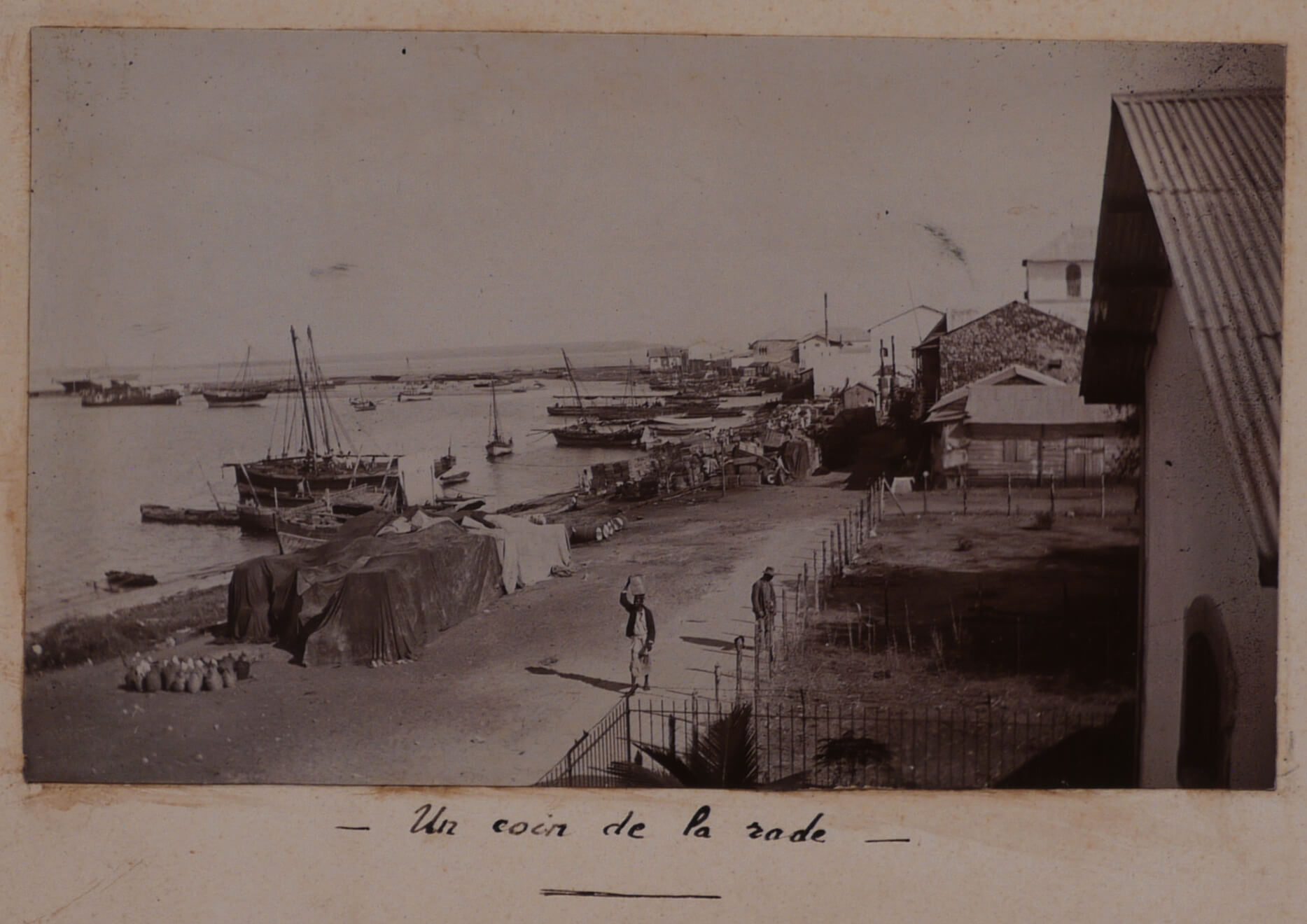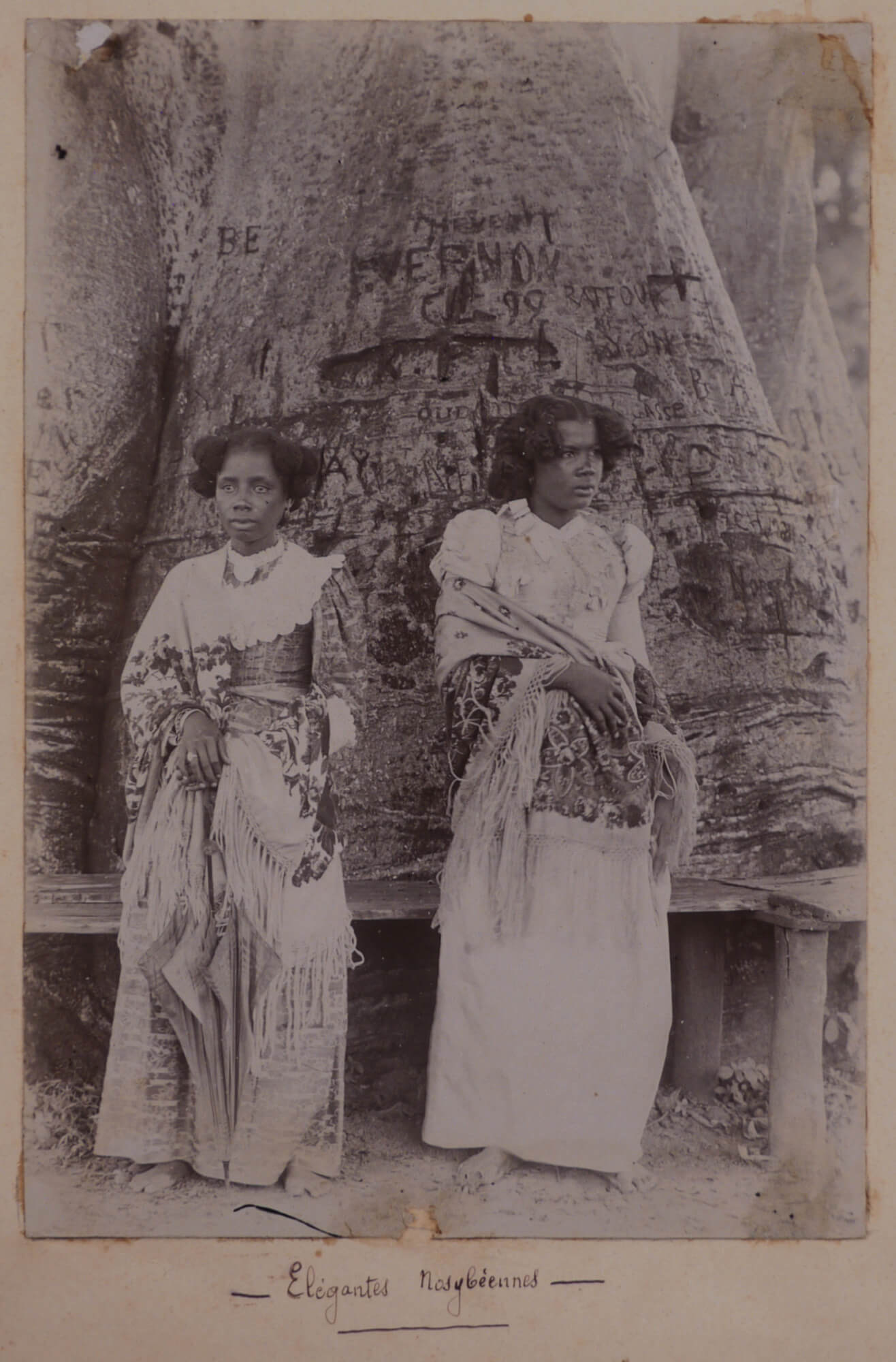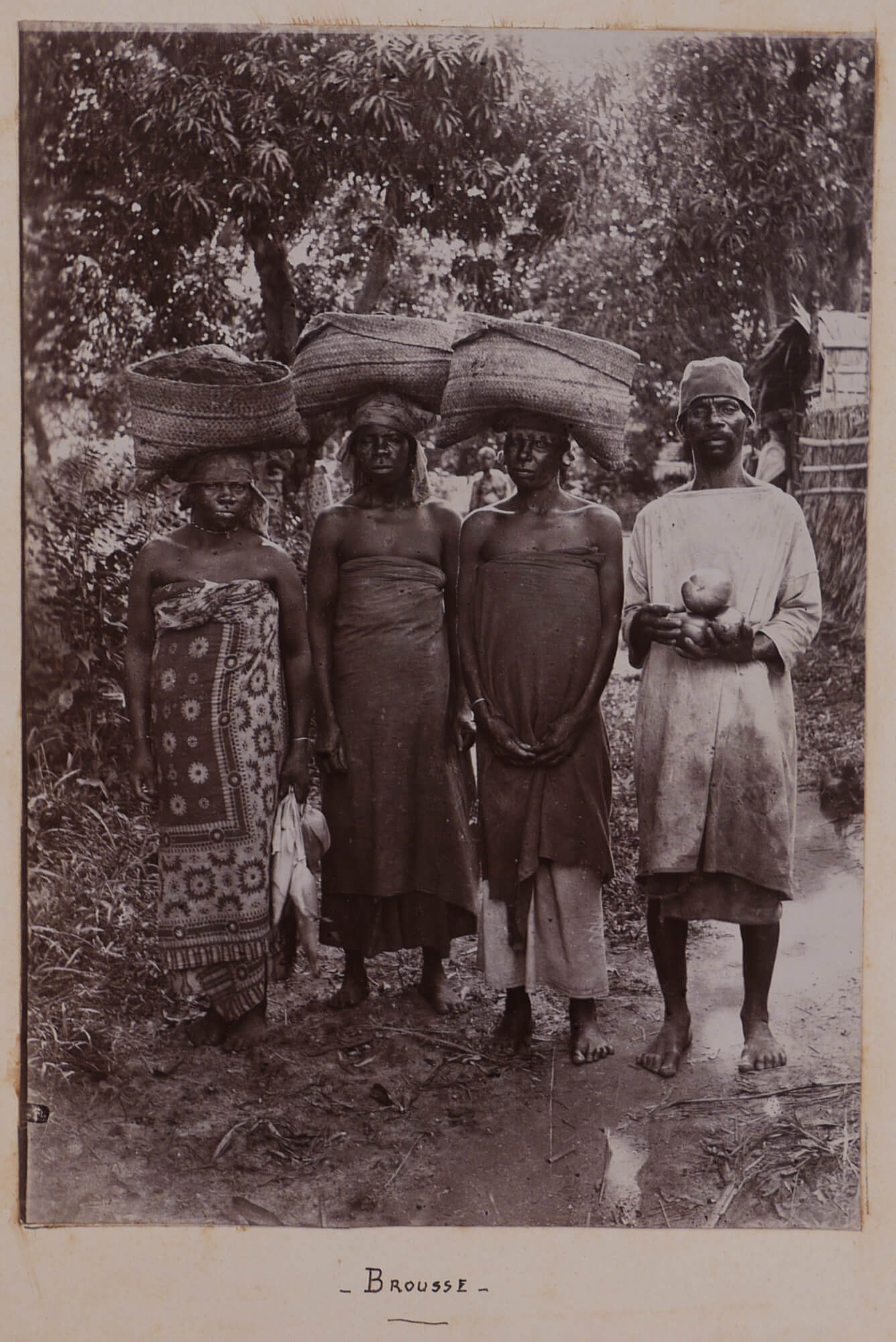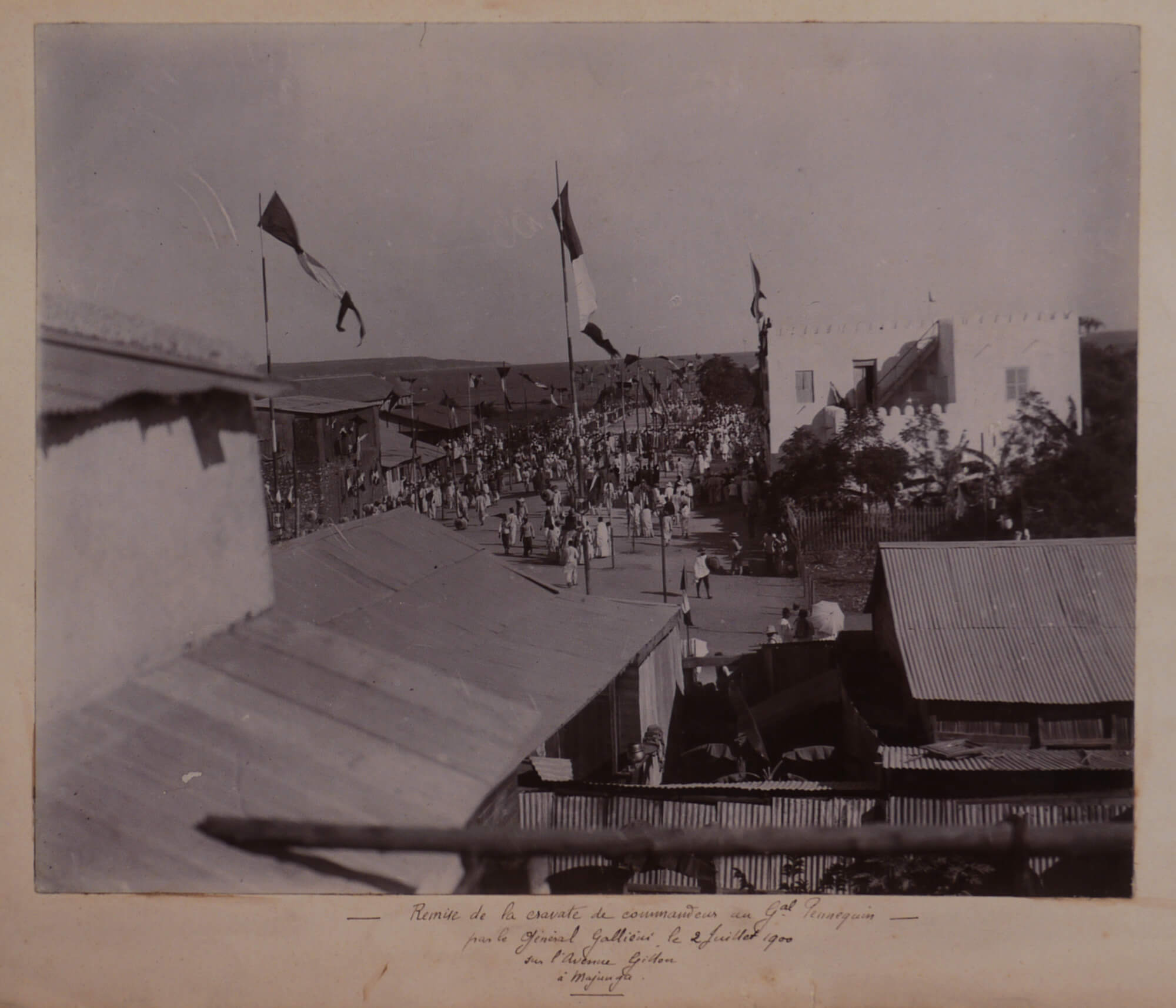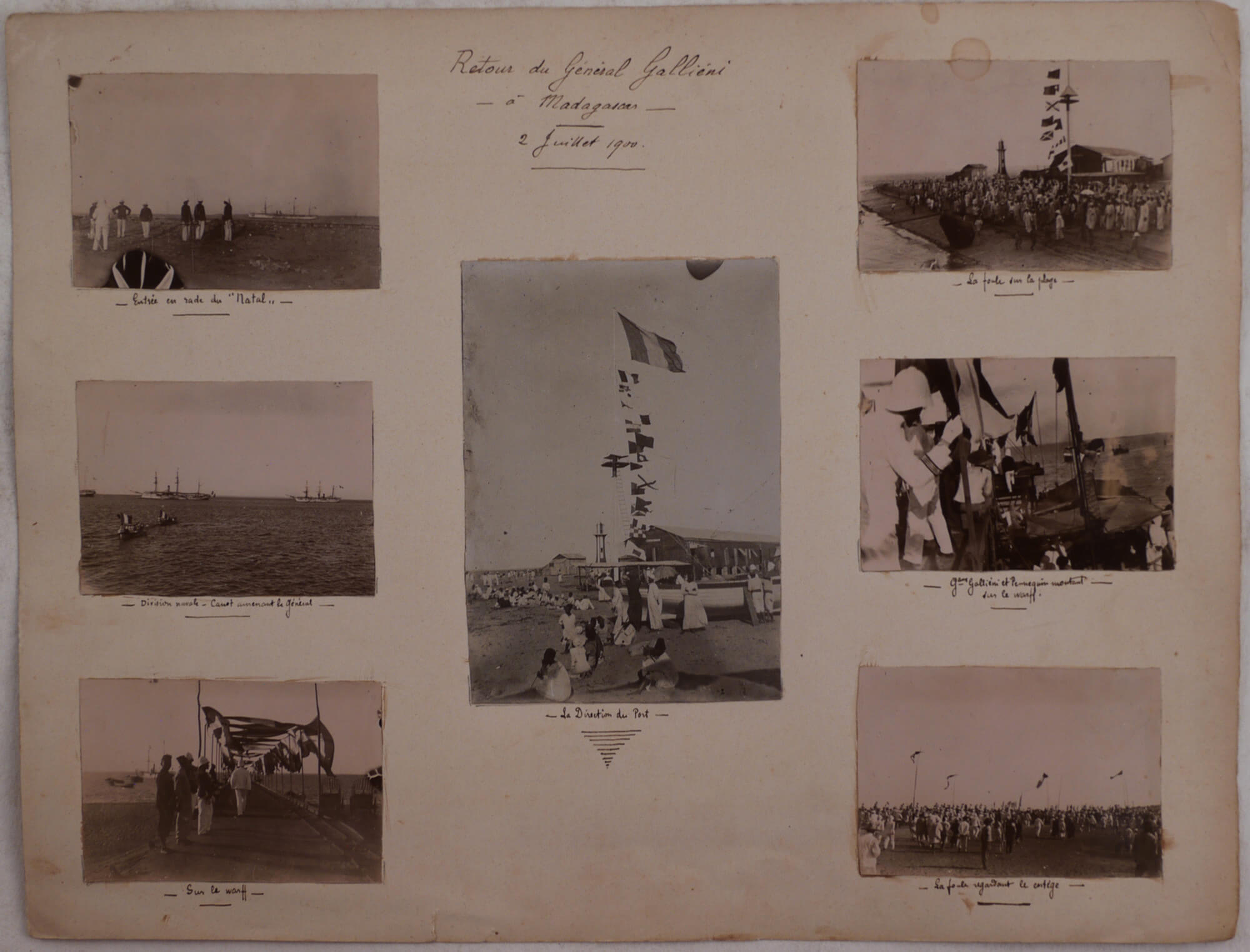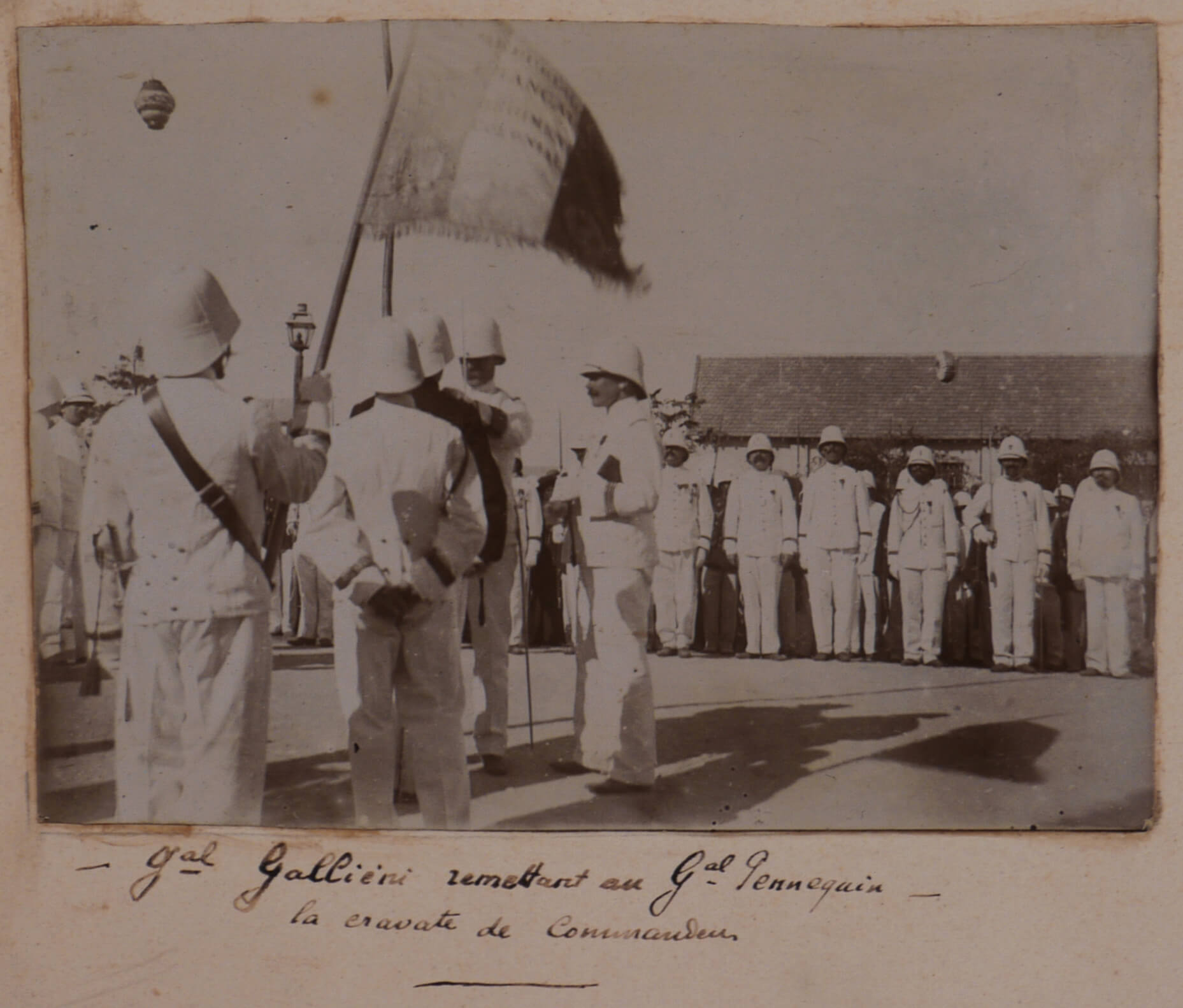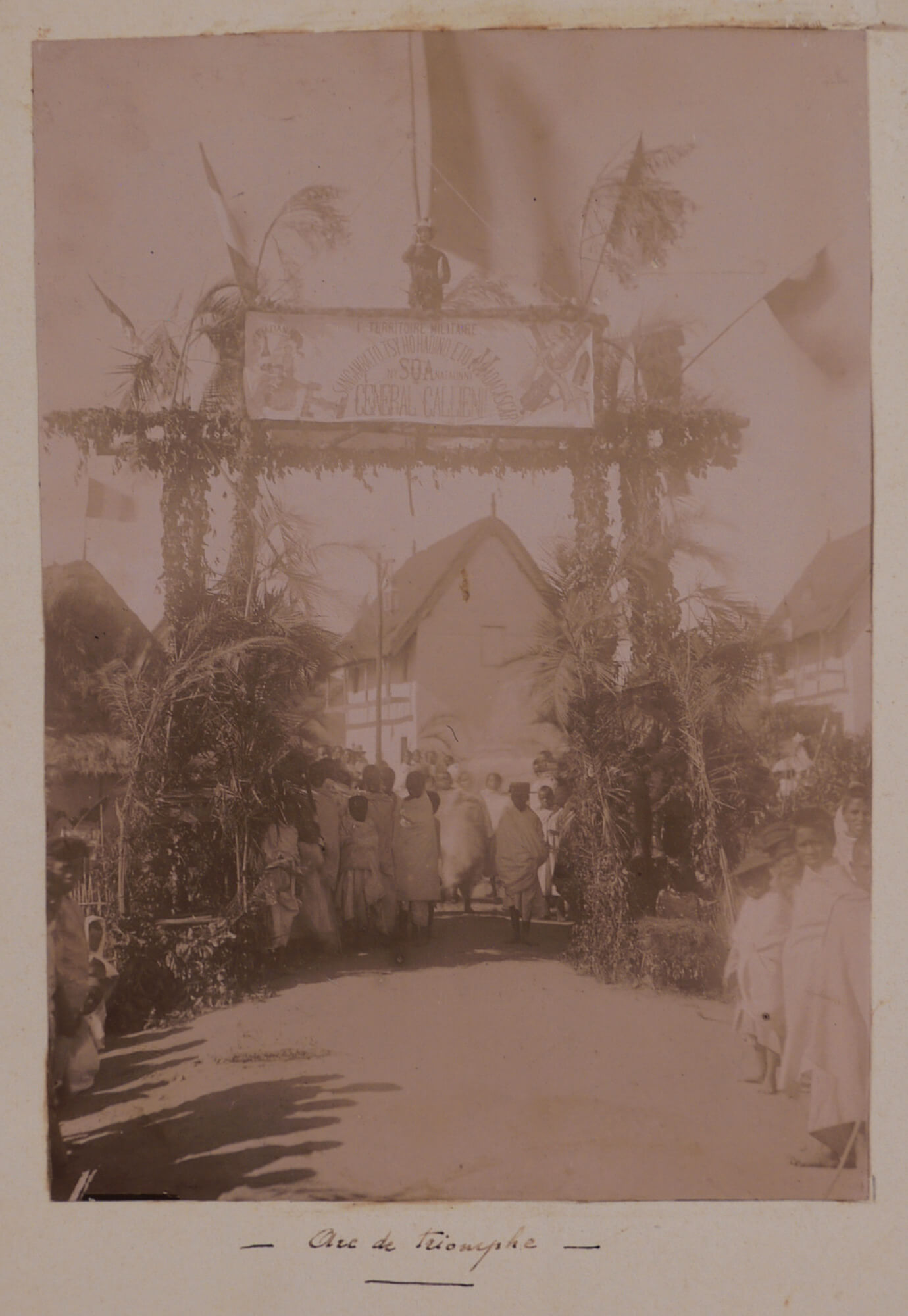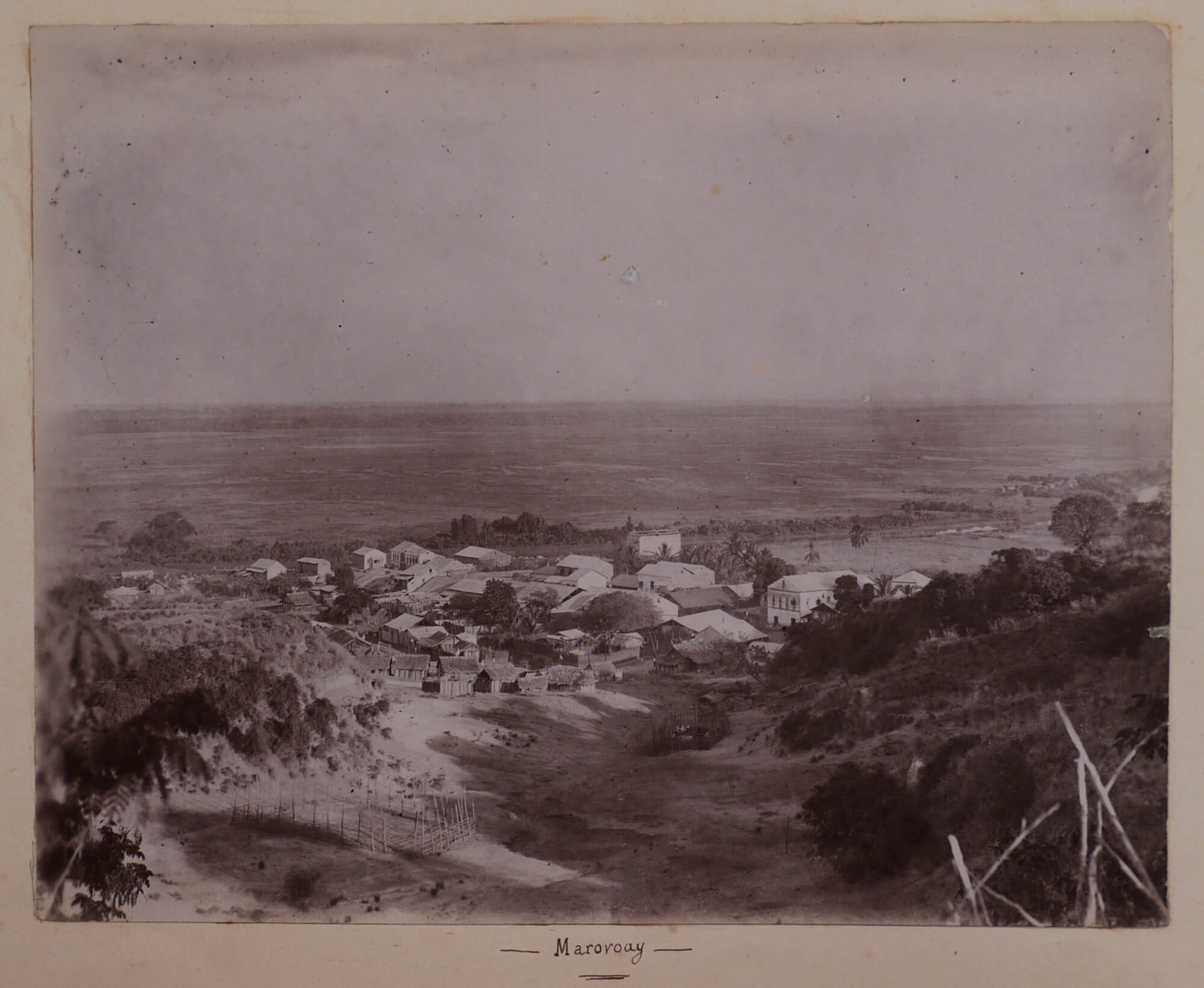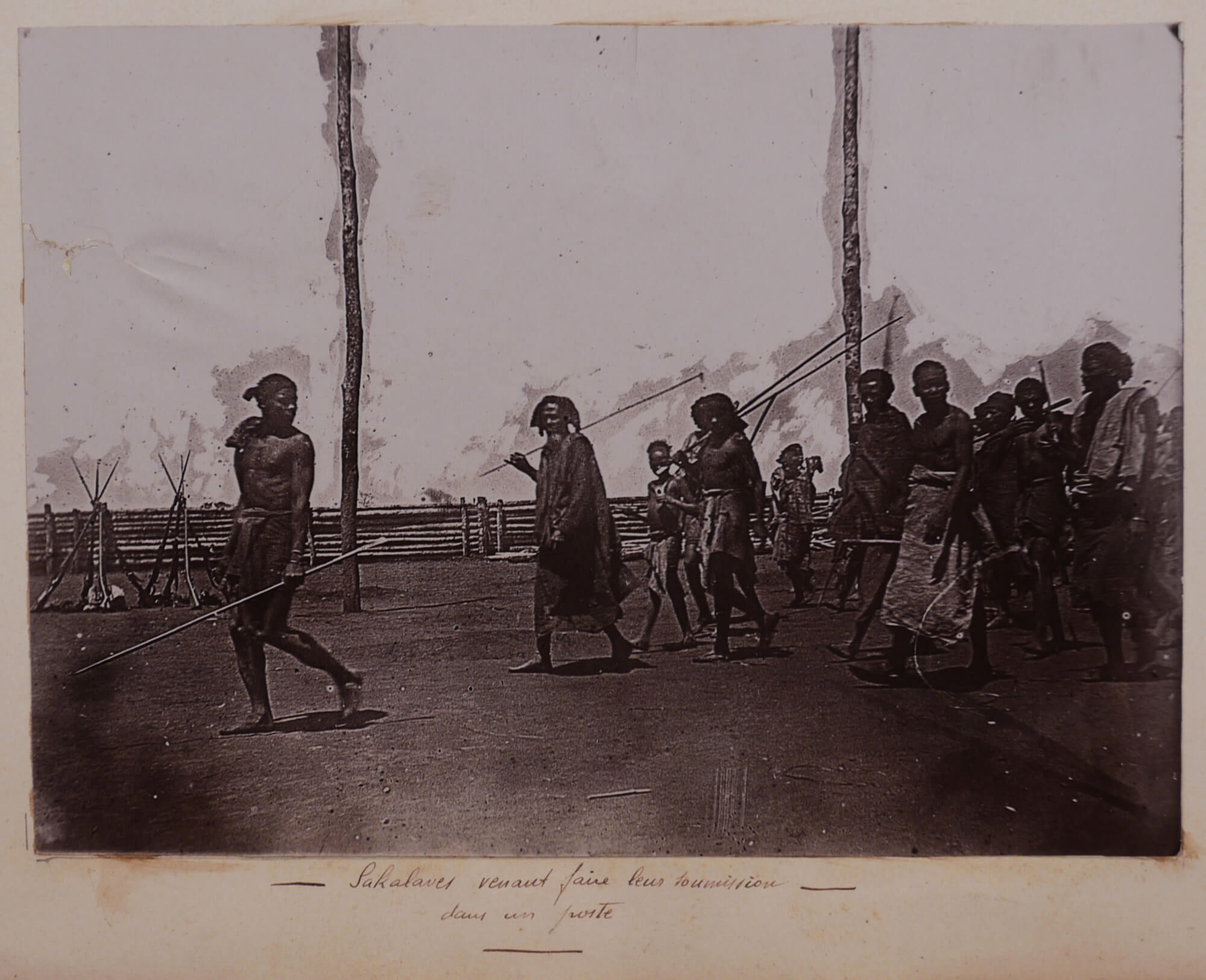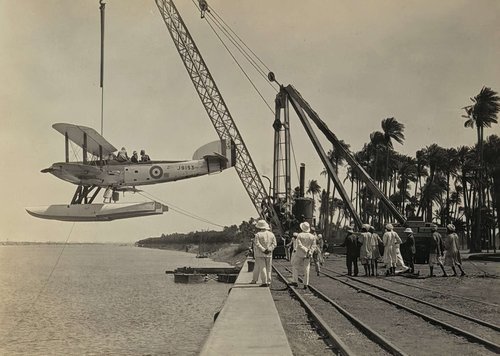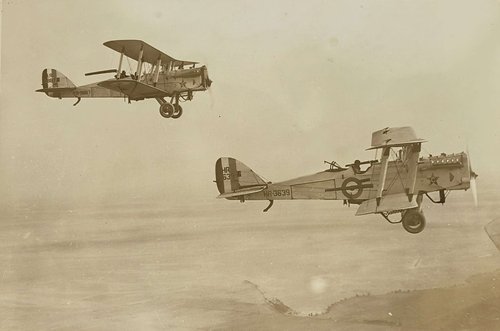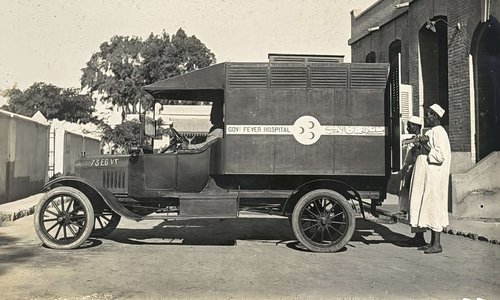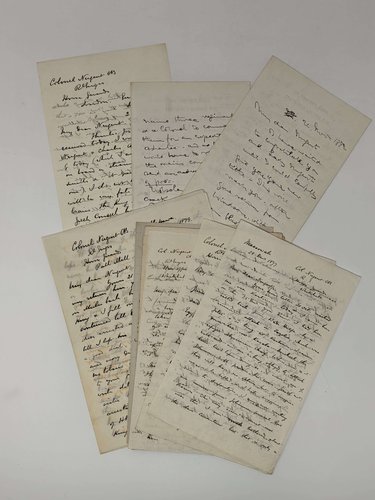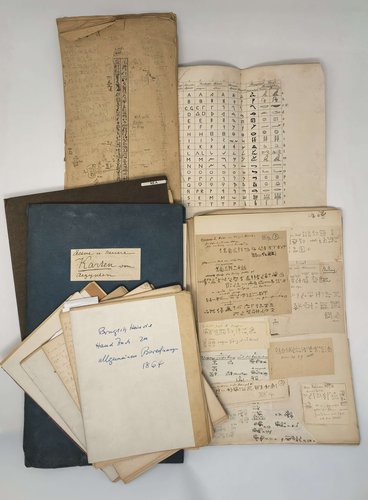
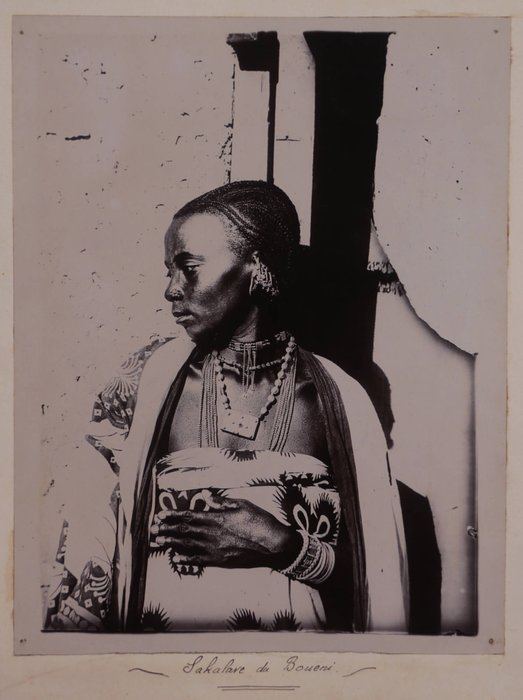
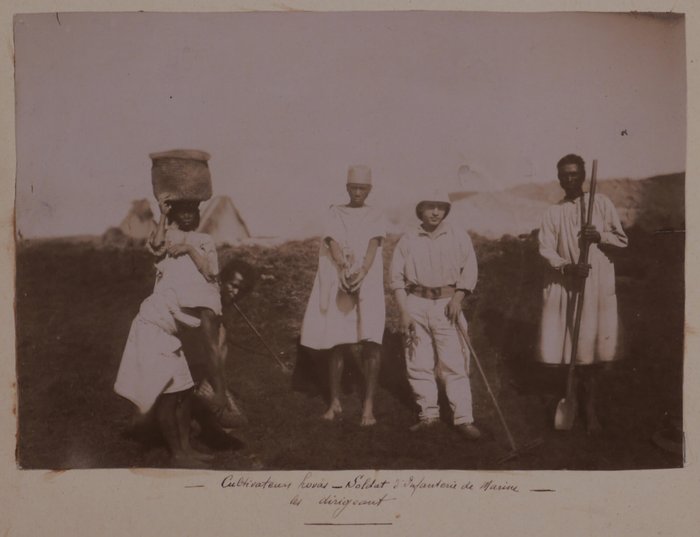
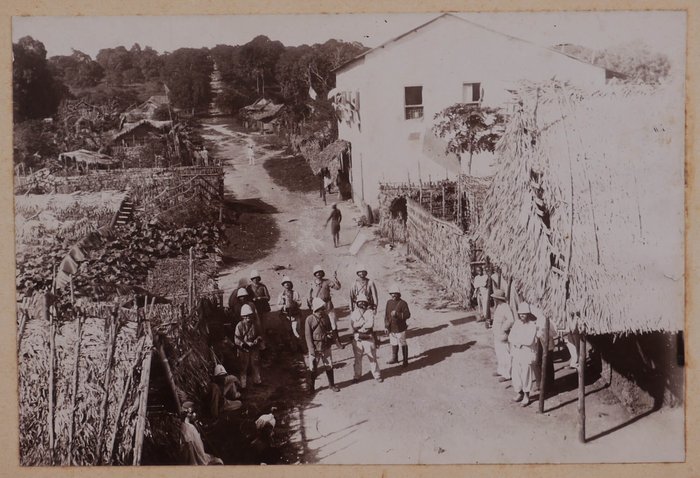
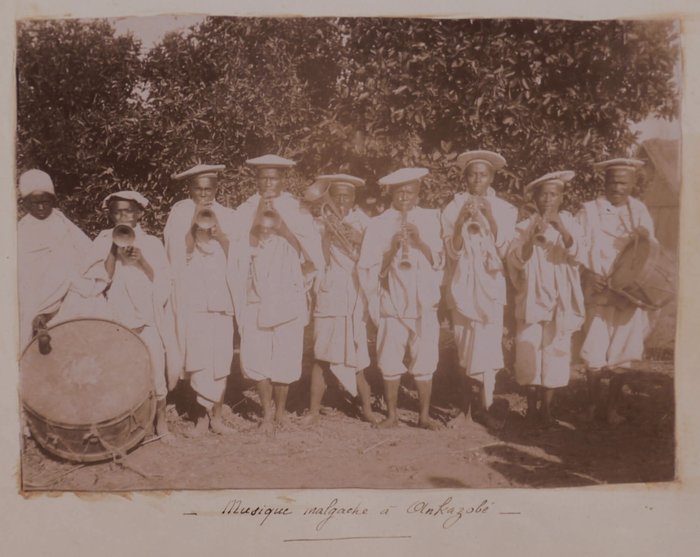
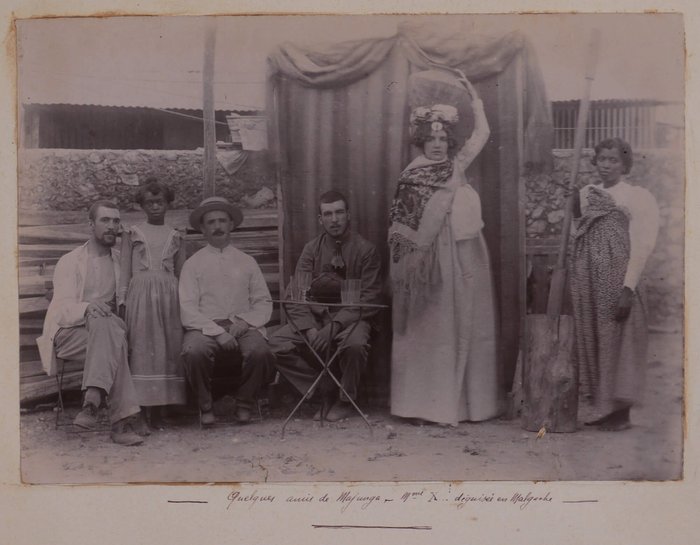
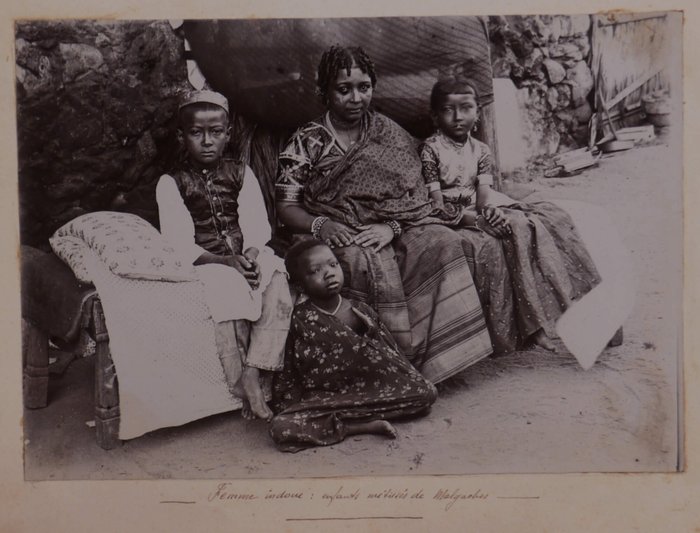
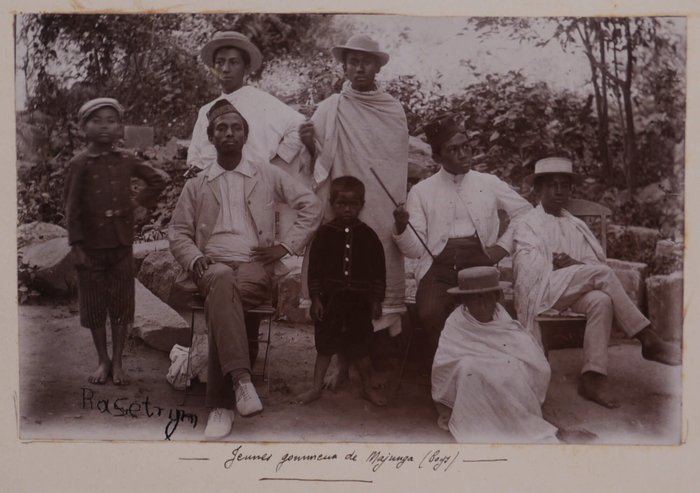
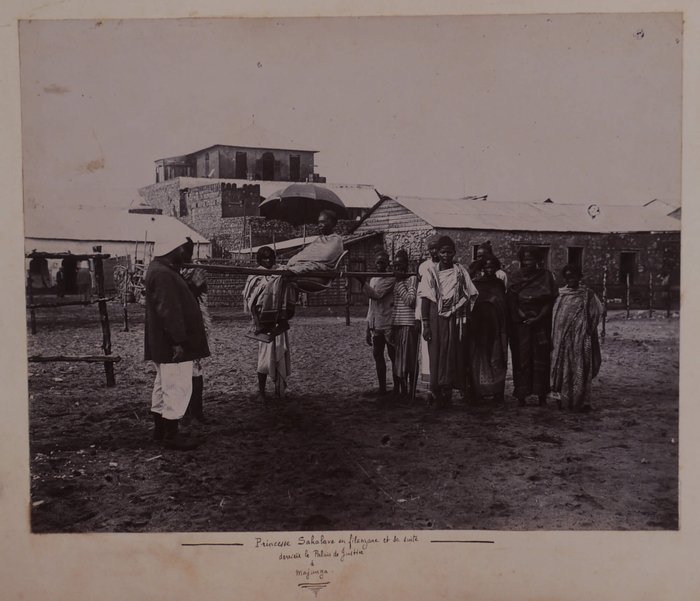
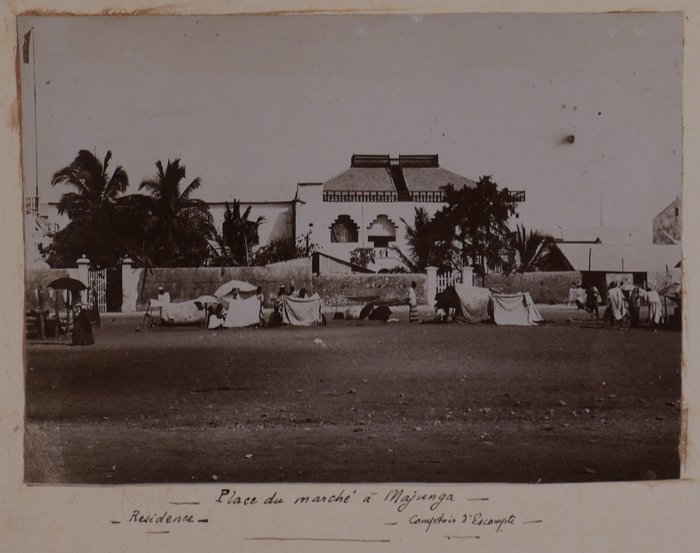
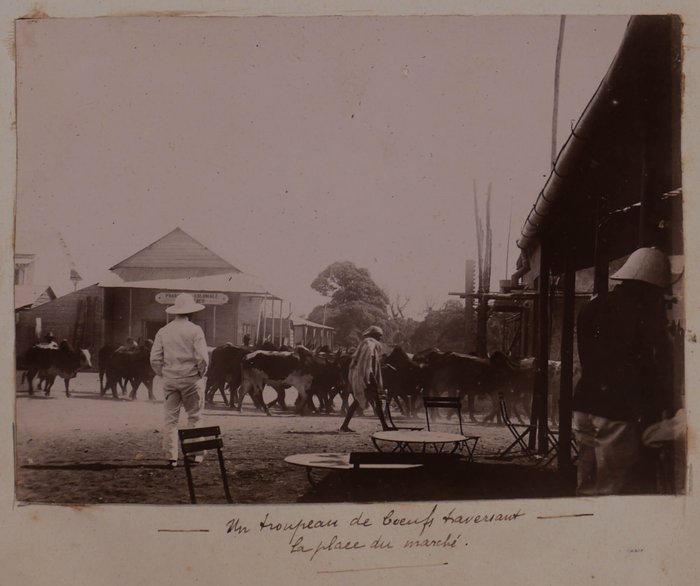
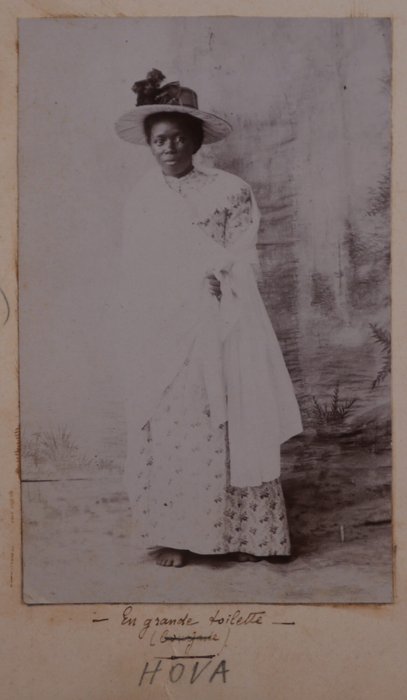
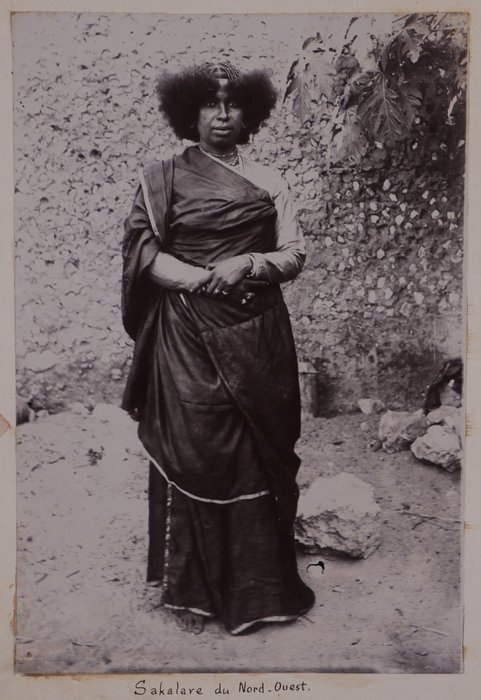
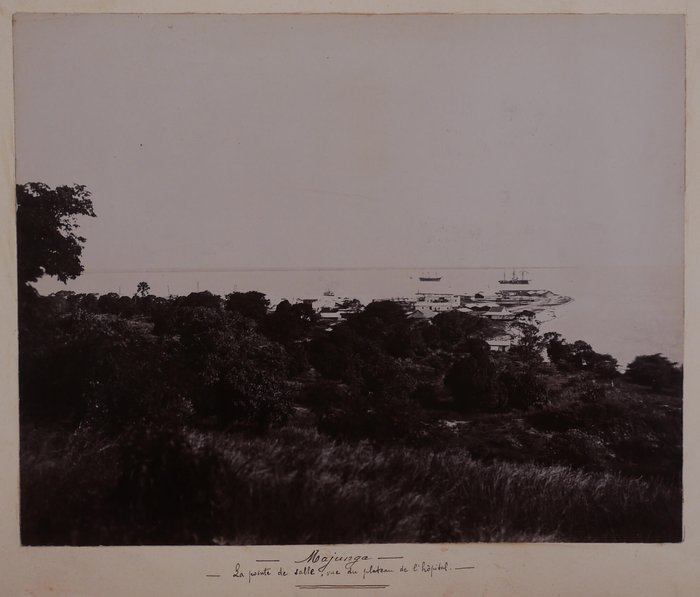
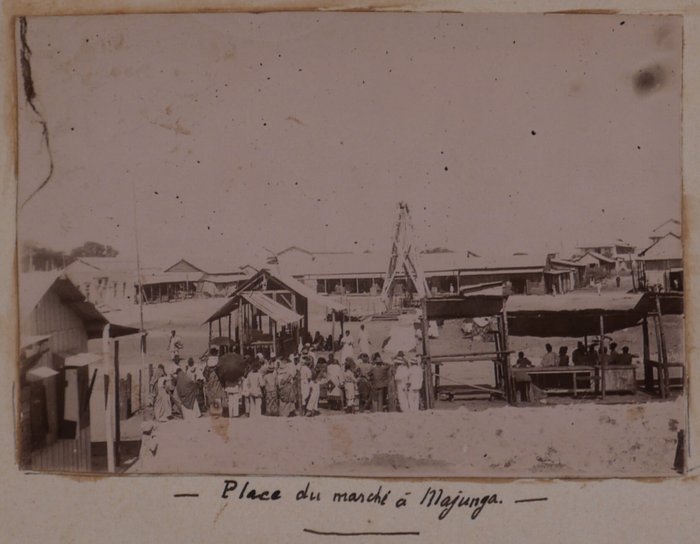
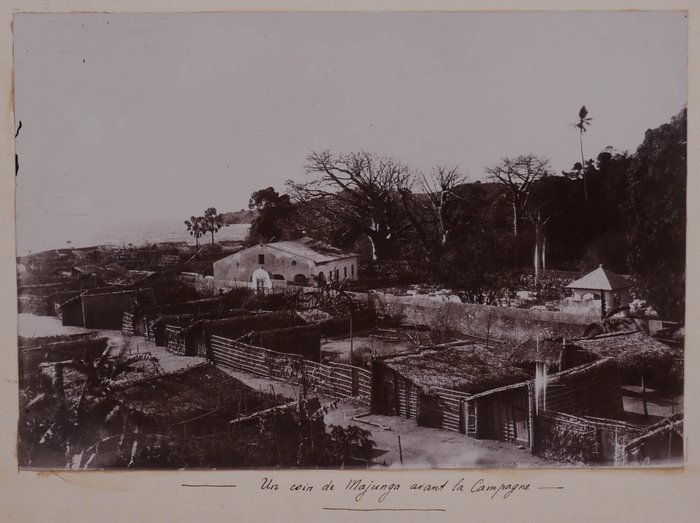
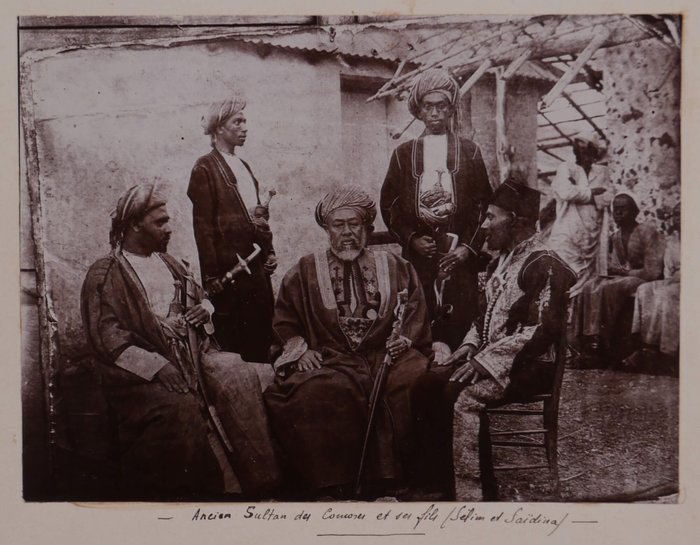
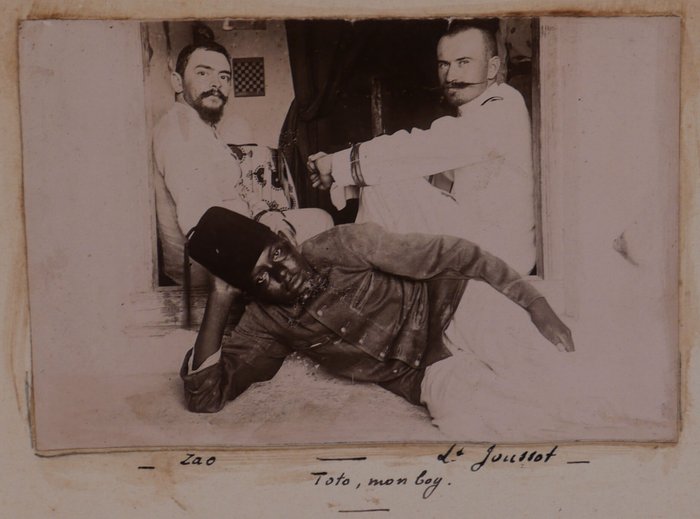
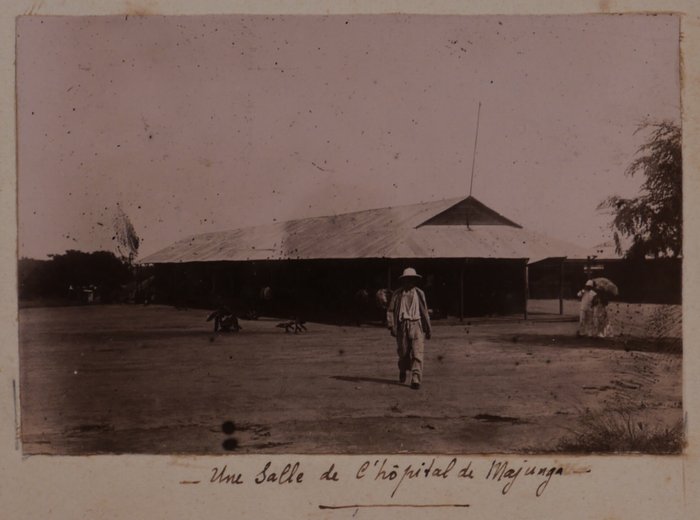
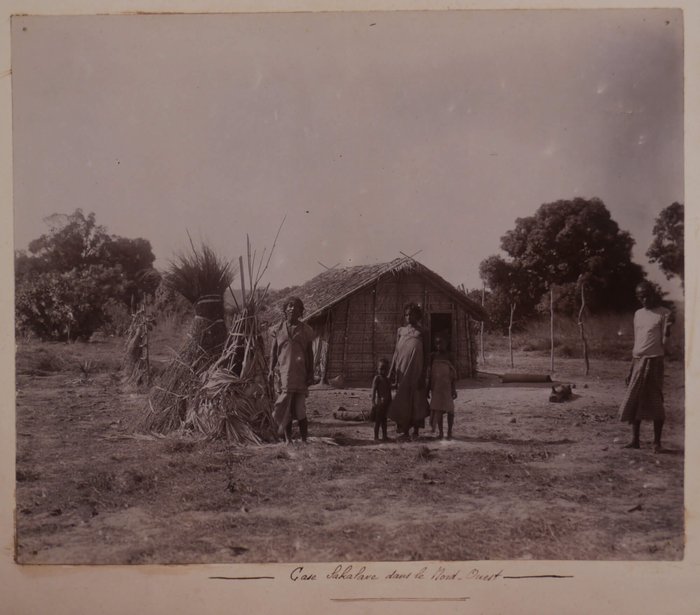
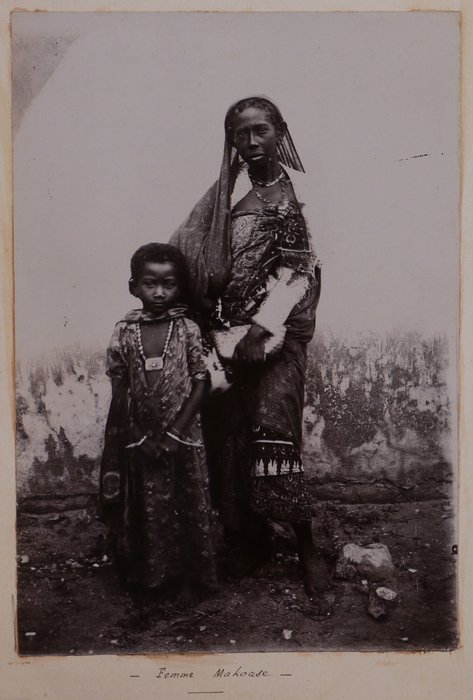
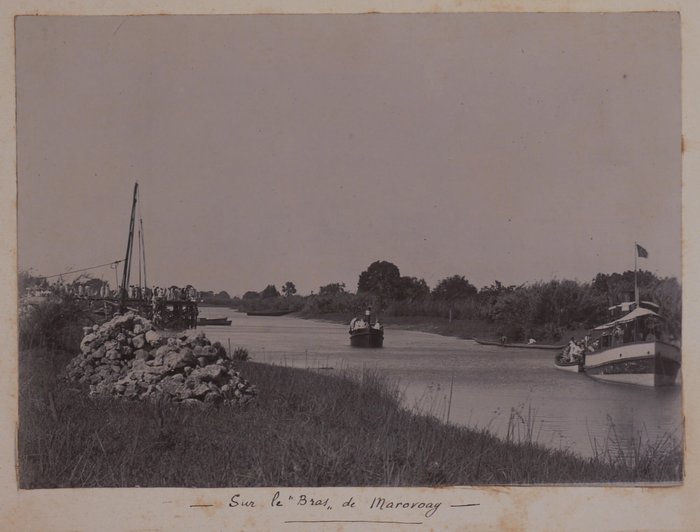
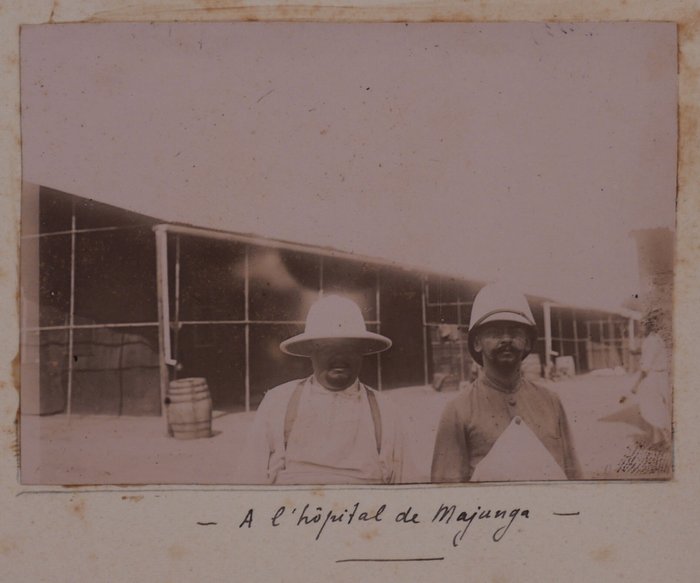
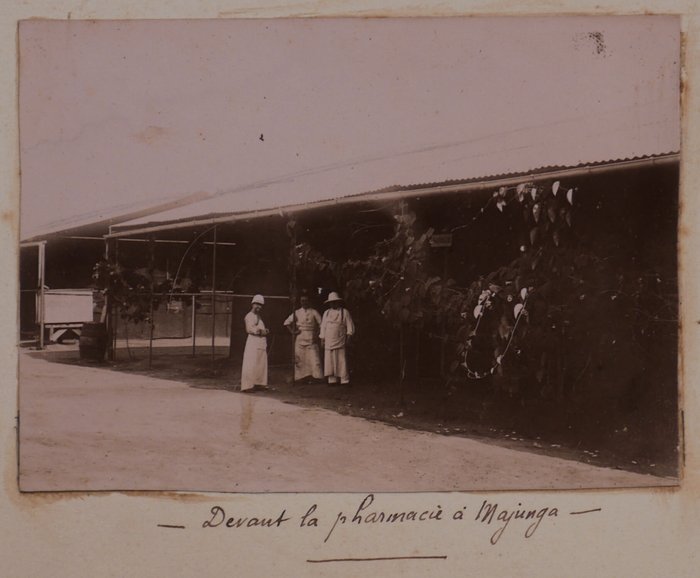
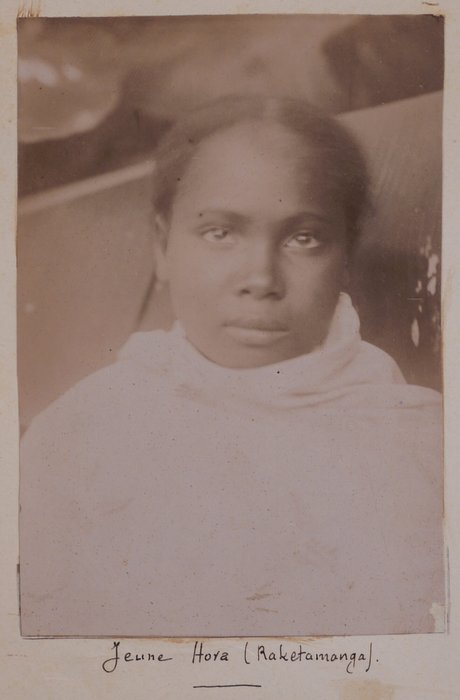
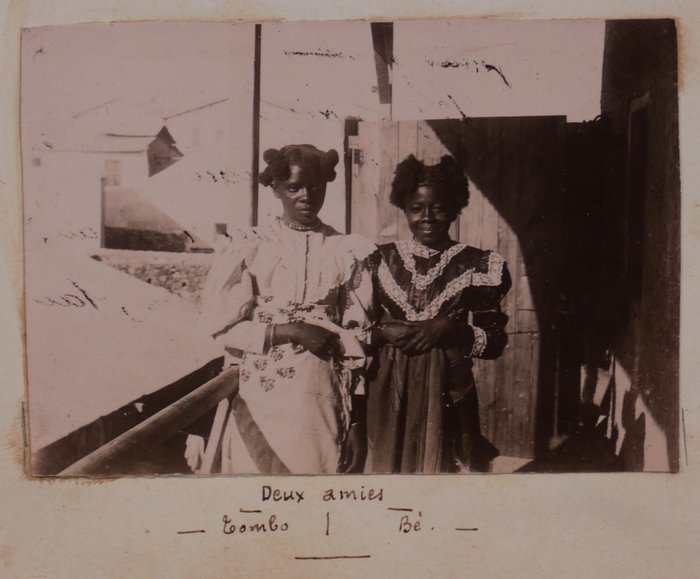
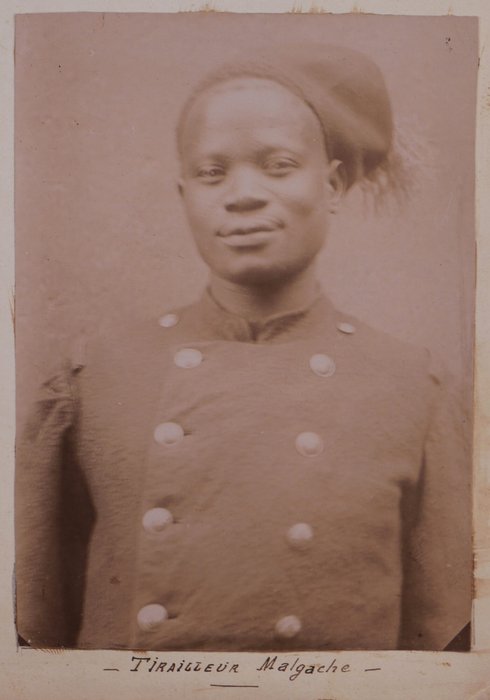
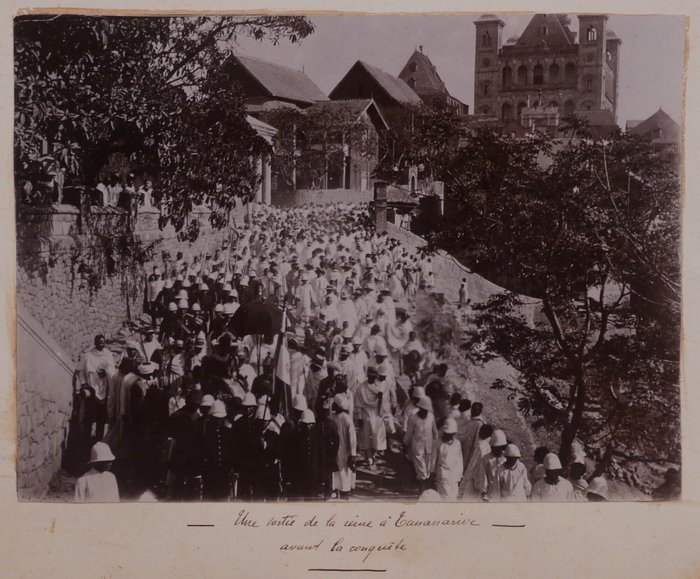
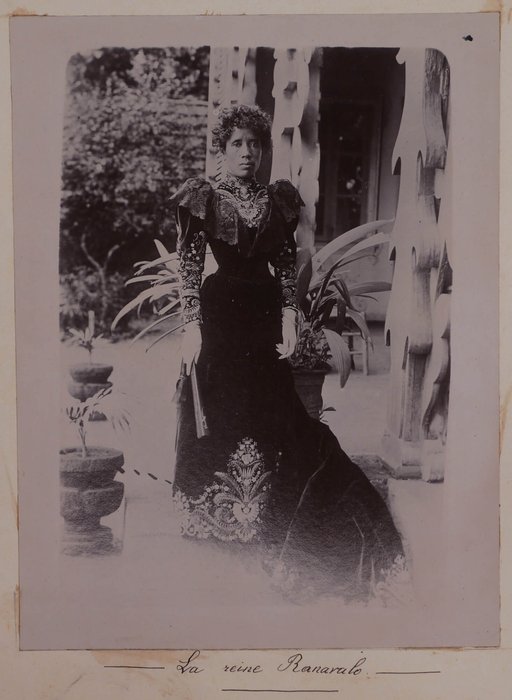
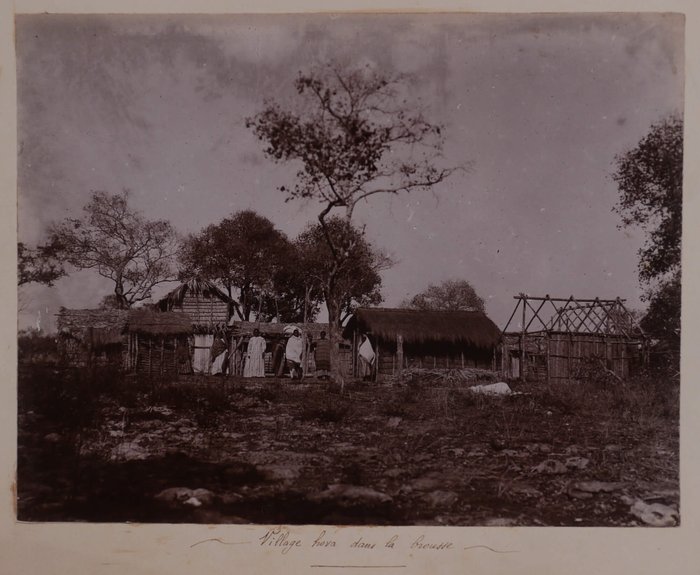
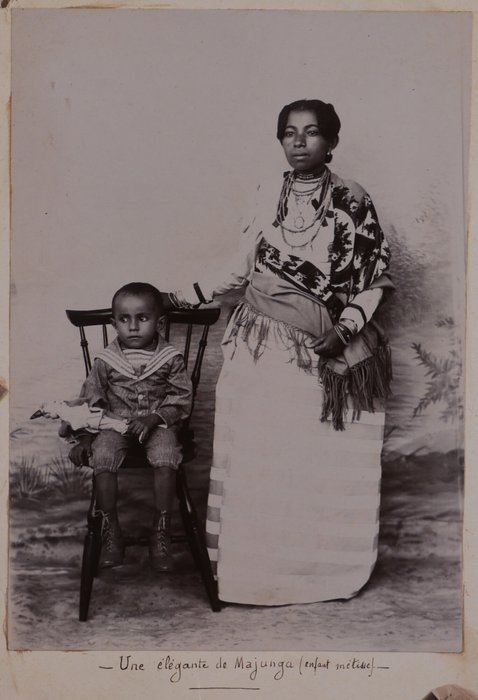
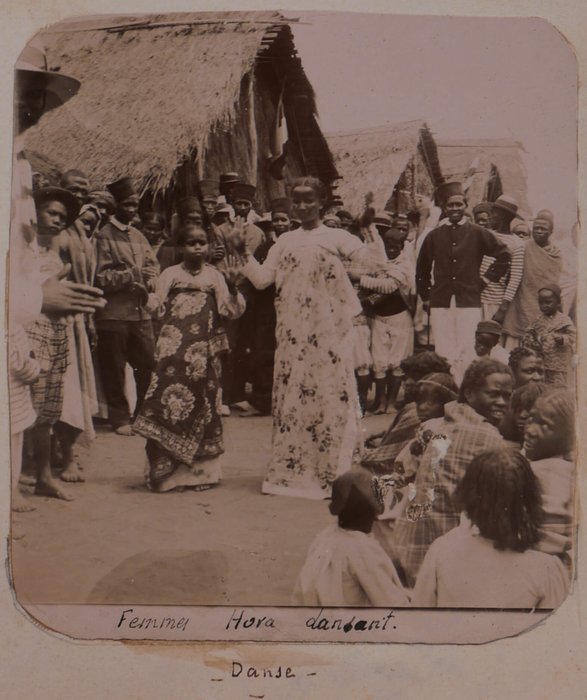
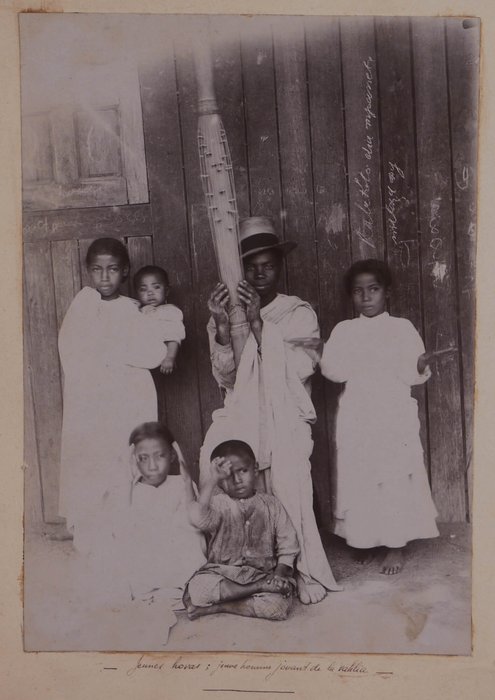
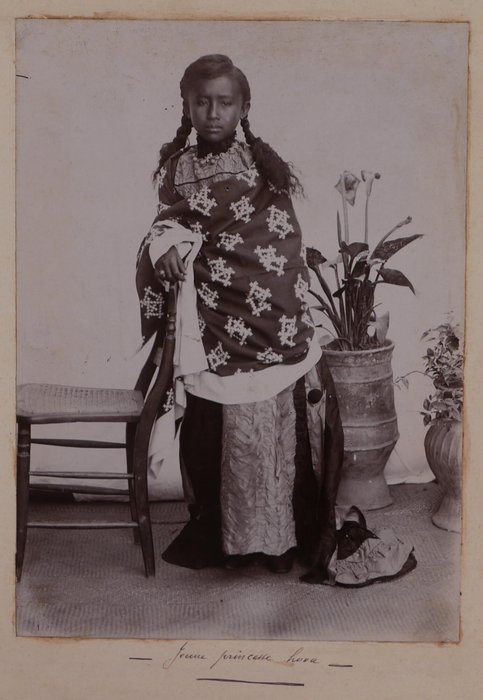
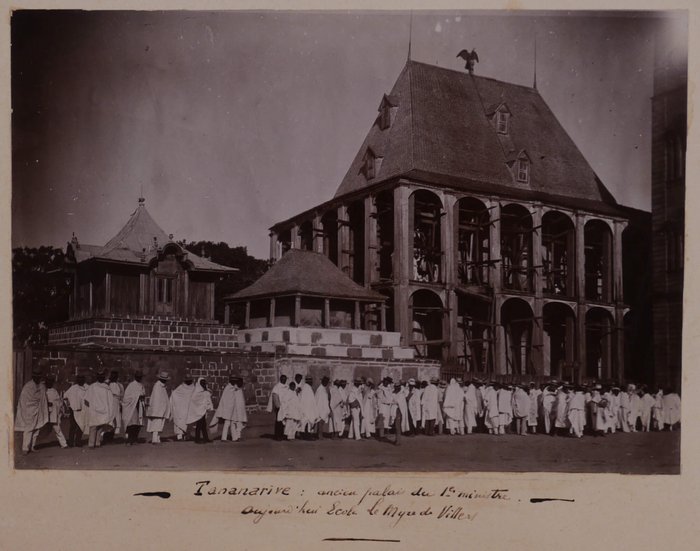
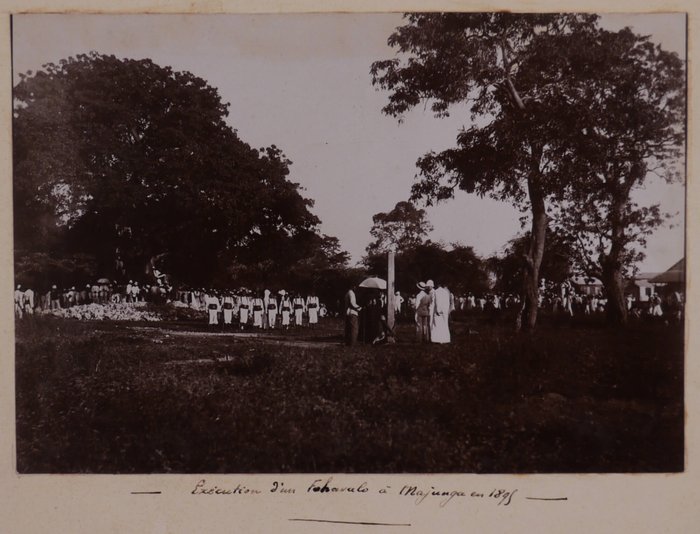
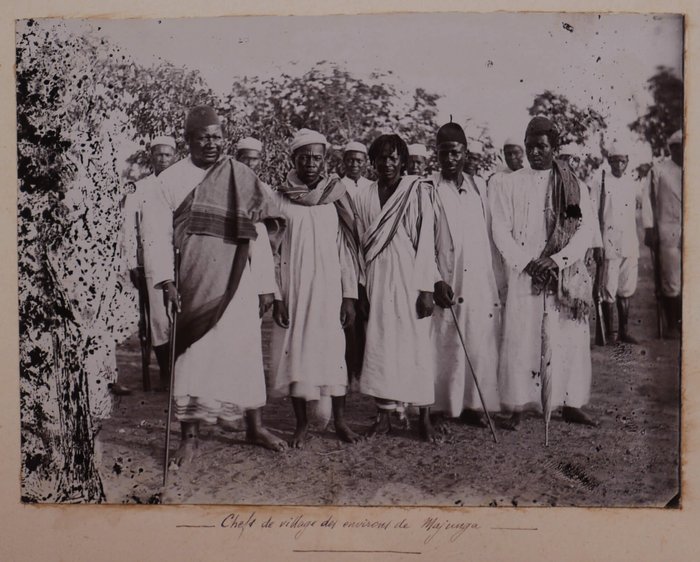
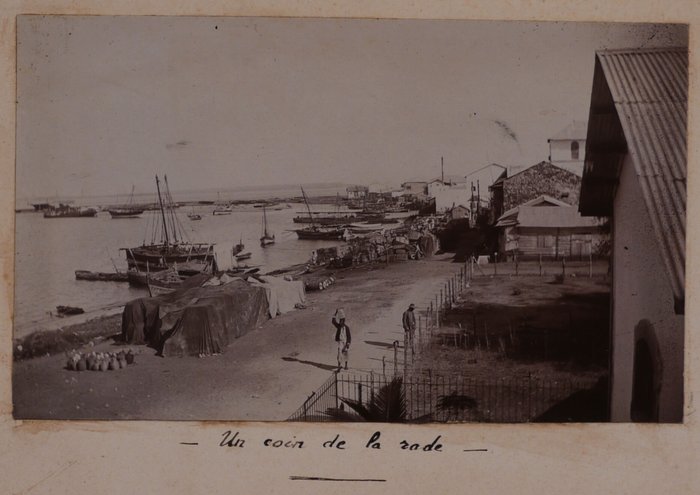
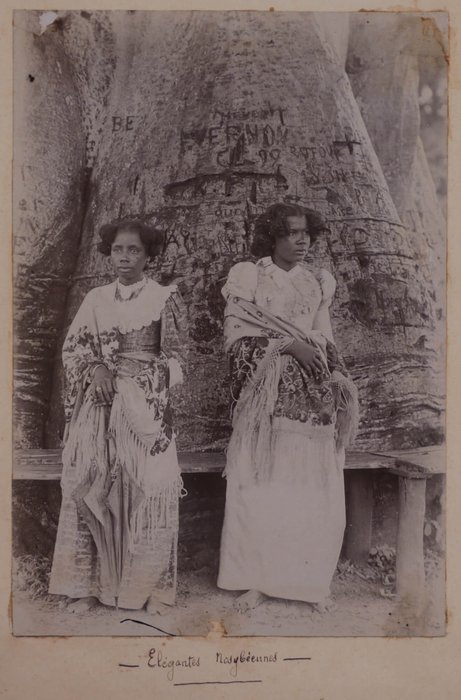
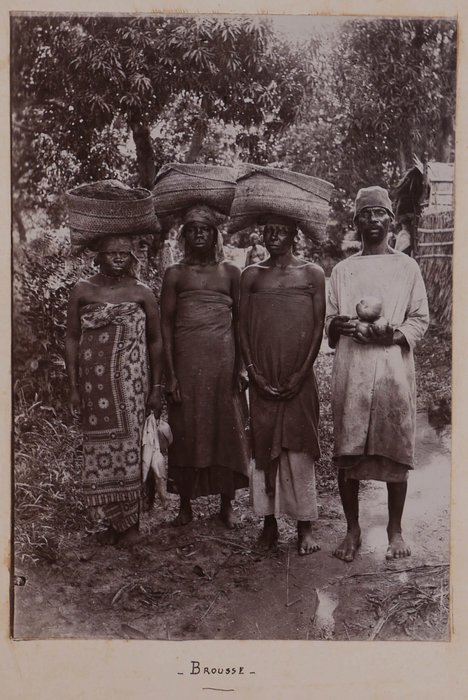
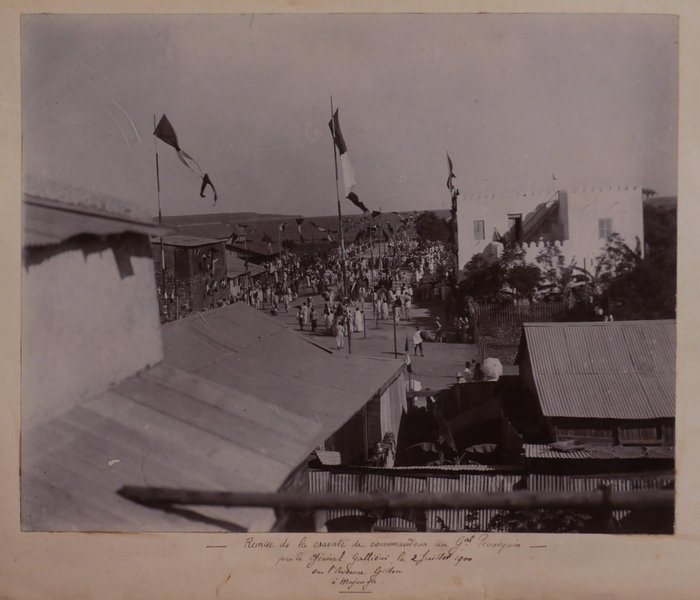
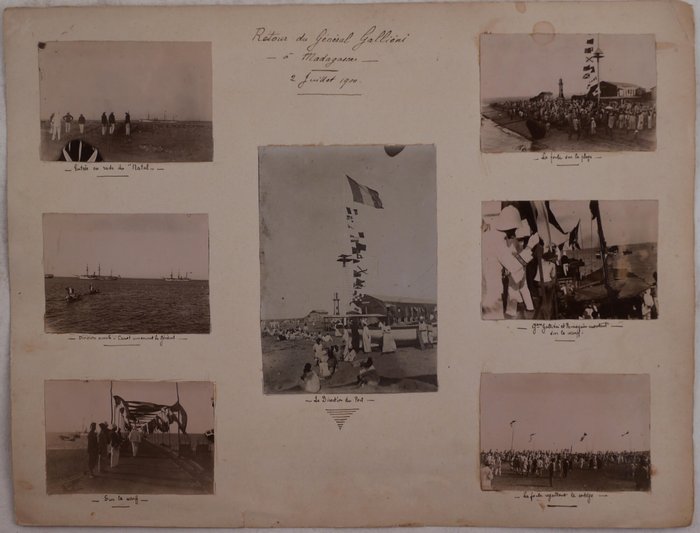
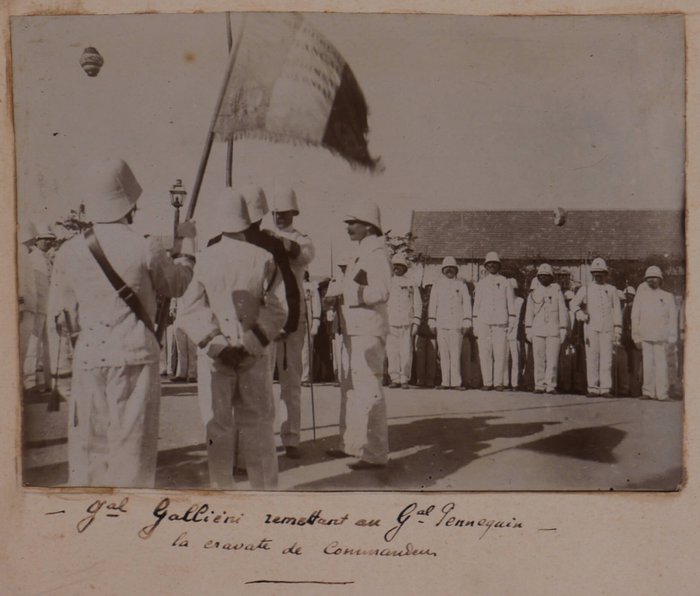
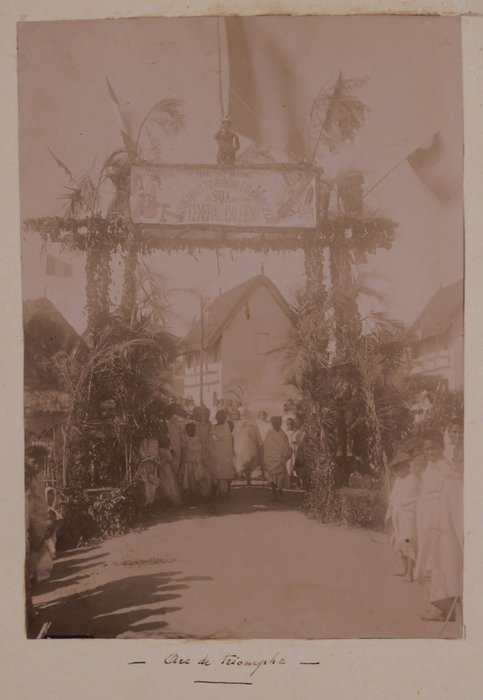
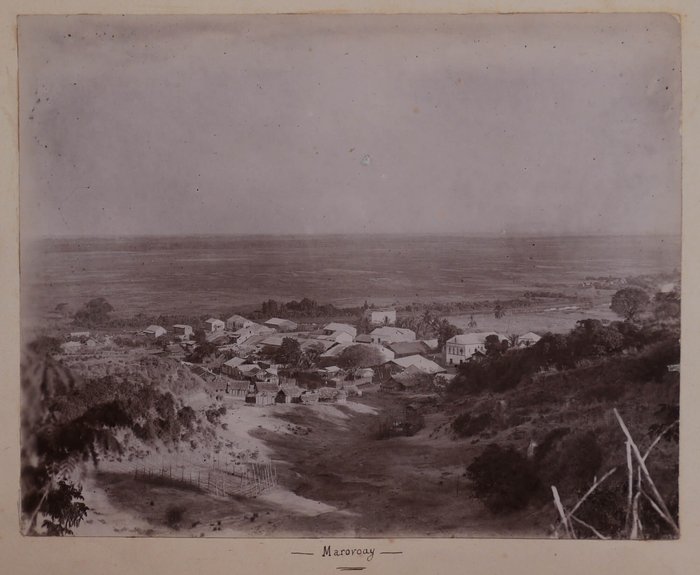
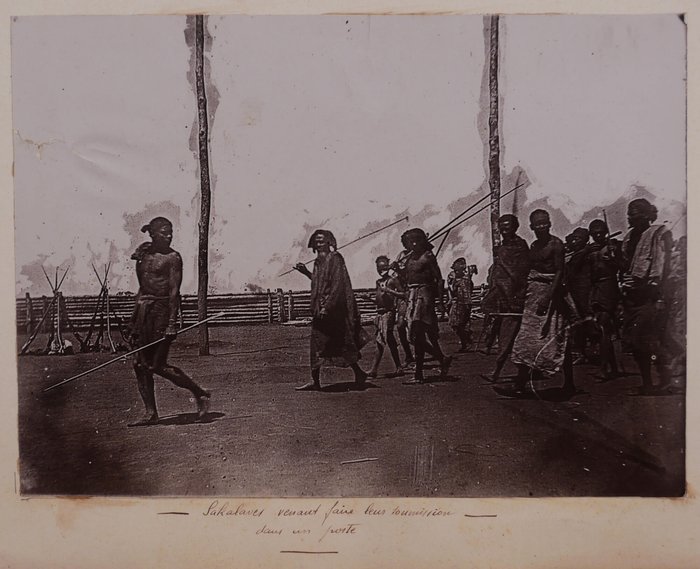
#P78
Ca. 1895-1901
Forty-seven loose album leaves (ca. 24,5x32 cm). With 179 mounted gelatin silver photographs, including 24 large photos ca. 20x24,5 cm (7 ¾ x 9 ¾ in), and ca. 60 medium-sized photos, ca. 11,5x17 cm (4 ½ x 6 ¾ in) or slightly smaller; the rest of the images are from ca. 10x14 cm (4 x 5 ½ in) to ca. 5,5x8 cm (2x3 in). All photos with period ink captions in French, mostly on the mounts. With a gelatin silver photo ca. 11,5x17 cm (4 ½ x 6 ¾ in) mounted on a slightly bigger card stock leaf, ca. 15,5x22 cm (6 x 8 ½ in); no caption. A few images mildly faded, about a dozen leaves with tears or small holes on extremities generally not affecting the photos, five large photos have been previously removed from the leaves, but overall a very good collection of strong interesting photographs.
Historically interesting and extensive collection of original studio and snapshot photographs of Madagascar in the late 1890s – before and during the French conquest (1894-1895) and shortly after the island became a French protectorate (1896) and colony (1897). The collection’s compiler was a young French doctor or medical officer stationed in the French military hospital in Majunga (Mahajanga). Five photos illustrate his trip to Madagascar in 1898 on board the steamer “Natal” via the Suez Canal, Djibouti and Zanzibar. The last photos in the collection are the views of Majunga dated “1901,” but quite a few images depict Madagascar scenes or people before the French conquest (“avant la conquête”).
Interesting images include large views of Majunga and environs, showing Avenue du Parc, Pointe de Sable taken from the hospital, market square, Arabian boats in the port, French military camp, and several native villages nearby. Overt twenty smaller views show the city streets, the raid, bread market stalls, “Nouvelle Residence,” “ancienne avenue du Rova,” a French man being carried in the “filanzane” in front of an artesian well in Majunga, scenes of a Hova celebration, a group in “uniformes vaies des anciens gouverneurs Hovas à Majunga avant la conquête,” “un kabary Hova à Majunga avant la conquête,” “Exécution d’un [… ?] à Majunga en 1895[?], etc.
Several photos show the grounds of the military hospital in Majunga where the compiler of the album was stationed, including “Pharmacie de l’hôpital à Majunga,” “Case des sœurs à l’hôpital,” “Dr. X… en filanzane,” “Une salle de l’hôpital à Majunga,” “L’aperitif à l’hôpital de Majunga,” “Ma case à l’hôpital de Majunga,” “Case des officiers de passage à Majunga,” “Un coin de ma vérandah à l’hôpital de Majunga,” etc. Some of the photos portray the compiler (sometimes named “Zao”) and his friends or colleagues (“Lt. Joussot,” “M. Cartron,” “Dr. X,” “Mme X…”). One of the photos portray “Quelques amis de Majunga,” with a French woman (“Mme X…”) dressed in a Malagasy costume.
Very interesting are the rare photos of Marovoay, a town on the Betsiboka River about fifty kilometres southeast of Mahajanga. Easily accessible by river steamboats, Marovoay became one of the French bases during the march to Antananarivo in 1895. The photos include two large views of Marovoay and a French steamboat on the Betsiboka River, and two large group portraits of native men mounted on oxen (“une fantaisie á dos de boeuf à bosse á Marovoay”) and native people and French officials gathered for “un tam-tam á Marovoay.” The other photos show the Betsiboka River plain, French steamboats near the Marovoay wharf, French military men on a pontoon bridge over the Betsiboka River, several views of Marovoay streets, the wharf with boats, “Avenue des potiers á Marovoay,” etc.
Over twenty photos show the festivities in Majunga during the return from France of General Joseph Gallieni (1849-1916), the conqueror and first Governor of Madagascar (1896-1905). The images are dated July 2, 1900, and include views of Majunga’s crowded Avenue Gillon decorated with French flags, French naval ships in the harbour, French officials on the pier waiting for Gallieni’s arrival, Gallieni and the interim Governor Théophile Pennequin (1849-1914) walking down a street, a military review, the decoration ceremony of Pennequin by Gallieni, the triumphal arc specially erected for Gallieni, a group of “cannoniers Créoles,” native women on the beach, the crowd next to the Residence, etc.
Over fifty photos are well-executed portraits of Madagascar native people, showing Queen Ranavalona III, Prime Minister Rainilaiarivony, a young “Andriana princess,” a “Sakalava princess” carried by her servants (with the Majunga Palais de Justice in the background), “Ancien Sultan des Comores et ses filles,” Betsileo, Sakalava and Betsimisaraka people, people of Majunga, Nosy Be, Boueni, Antananarivo, Ambato on the Betsiboka River, rice merchants, water carriers, “Chefs de village des environs de Majunga,” “Jeune beau de Tananarive,” “Mélange de Sakalaves et d’ Arabes,” “Tiralleur Malgache,” an East-Indian woman with her half-Malagasy children, a band of native musicians from Ankazobe, “types de Bourjanes,” young girls carrying large cans with milk, children shelling rice, dancing Hova girls, a carpenter working on raffia palm planks for a future house, and many others. There are also several views of Antananarivo (general view, the Rova compound with the Queen’s Palace and church, Prime Minister’s Palace, children of Tananarive), etc. Overall an extensive collection of early interesting studio and snapshot photos of French Madagascar.

